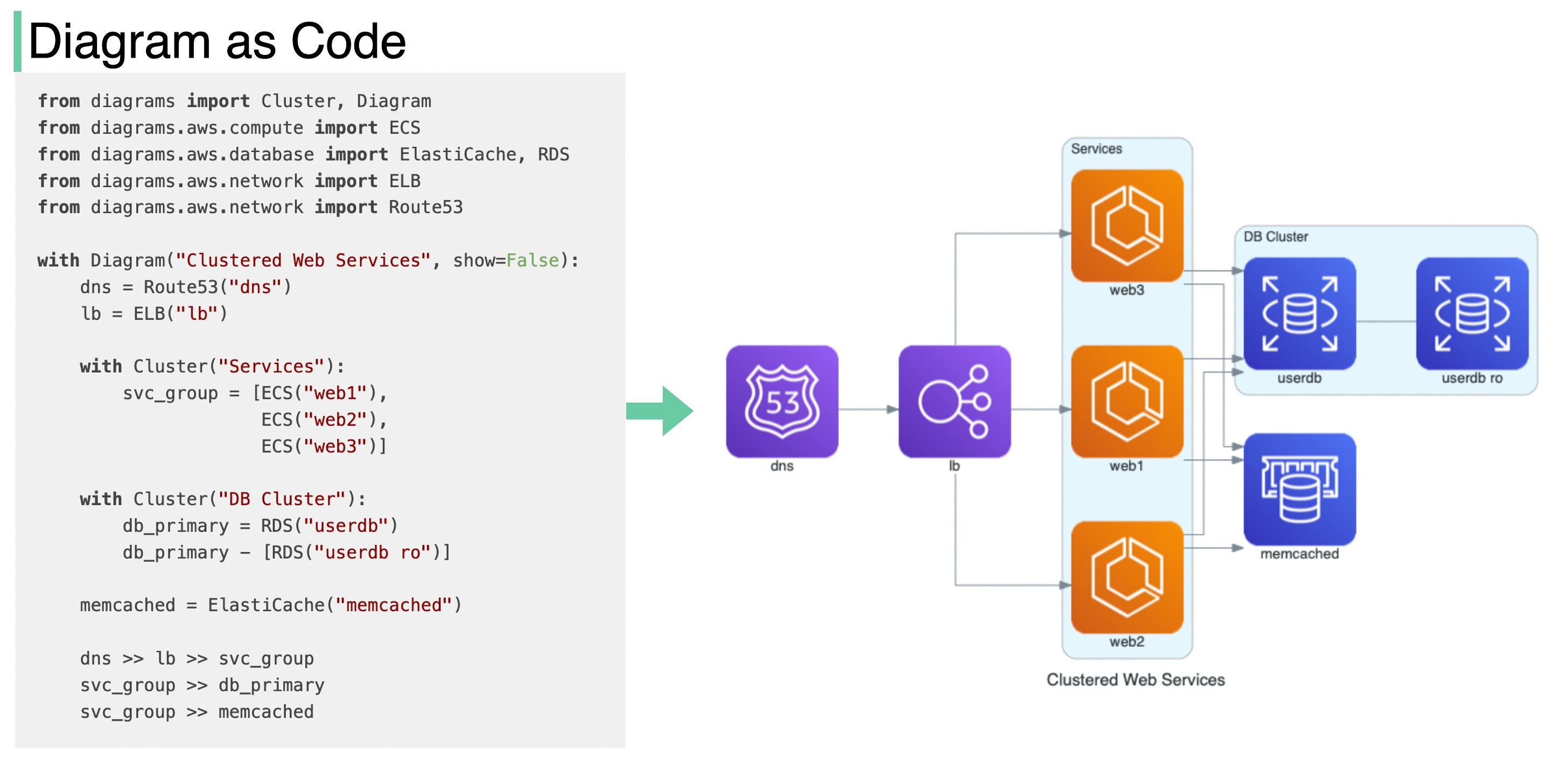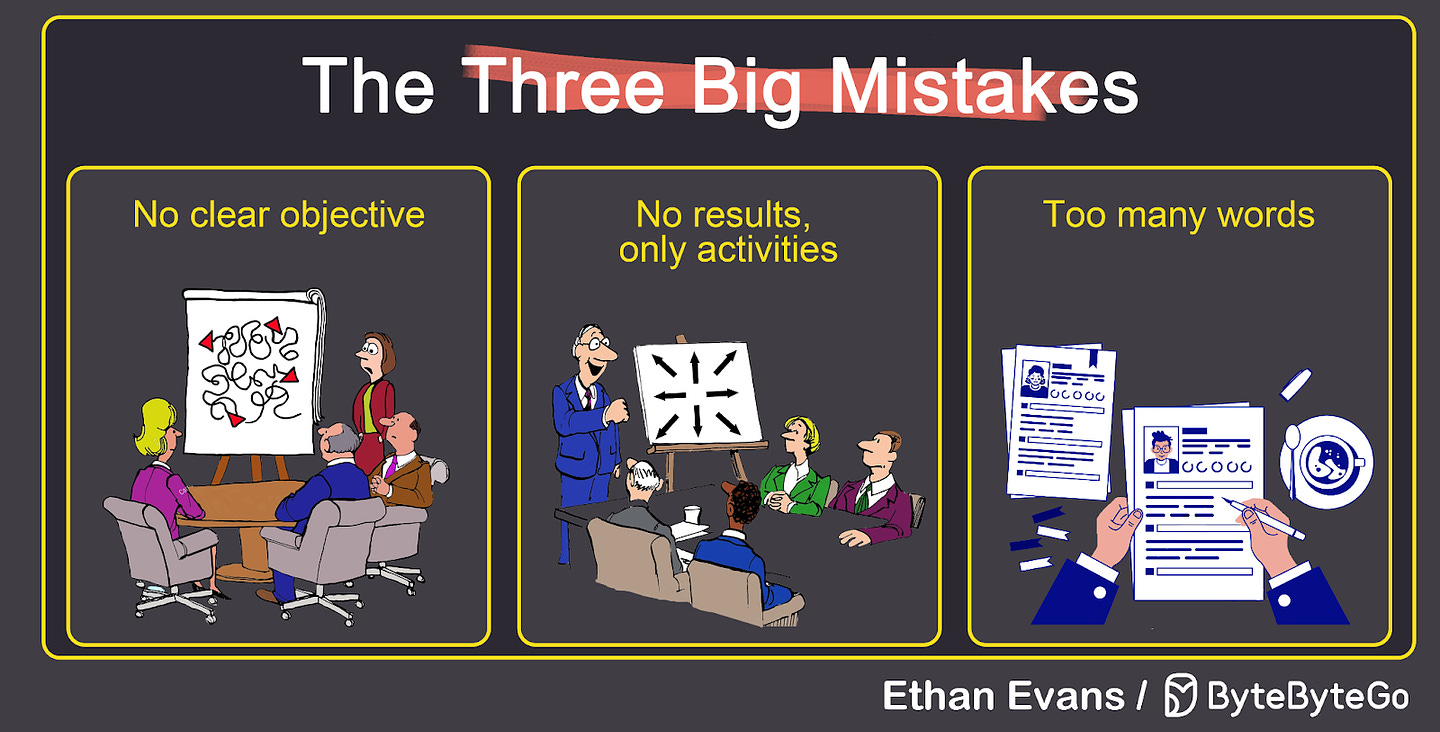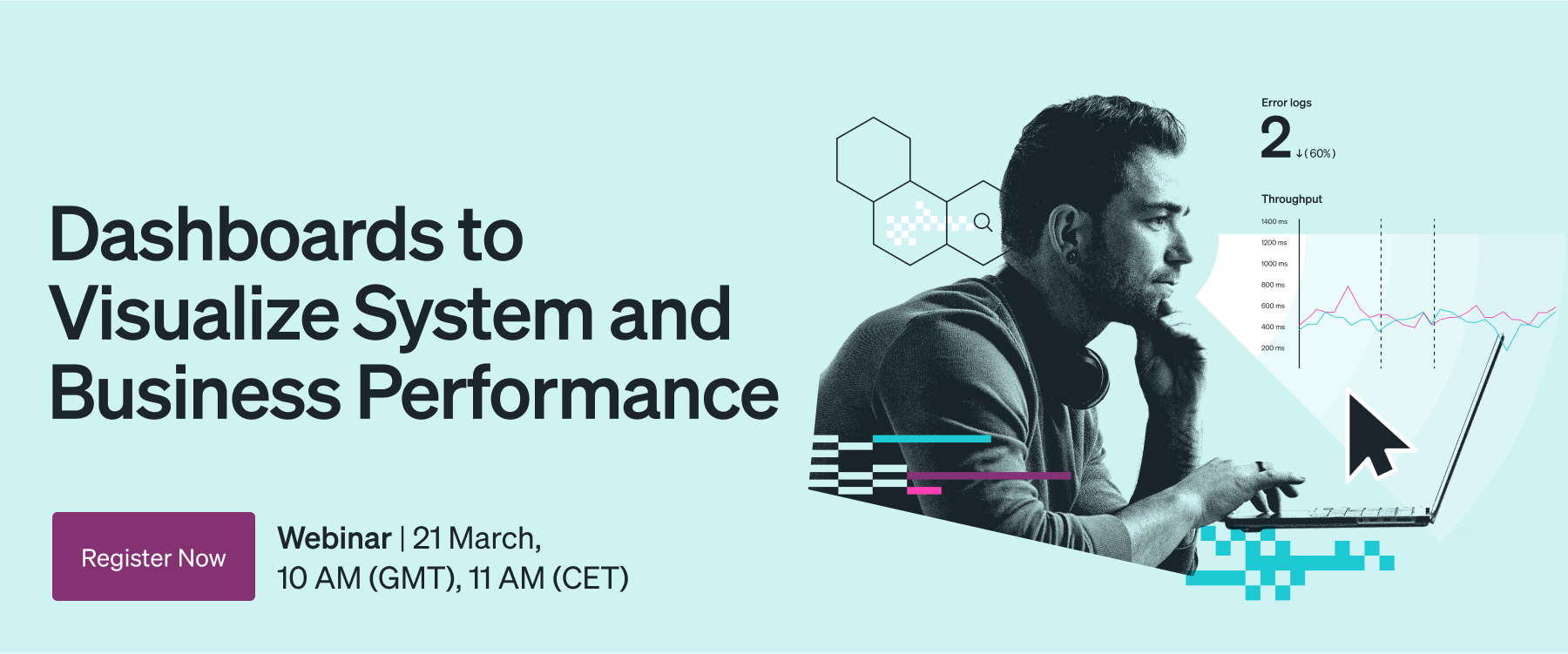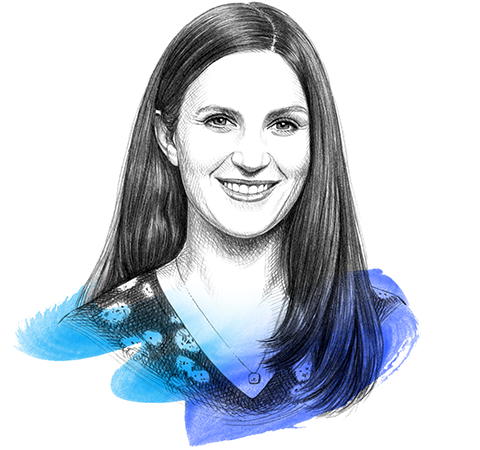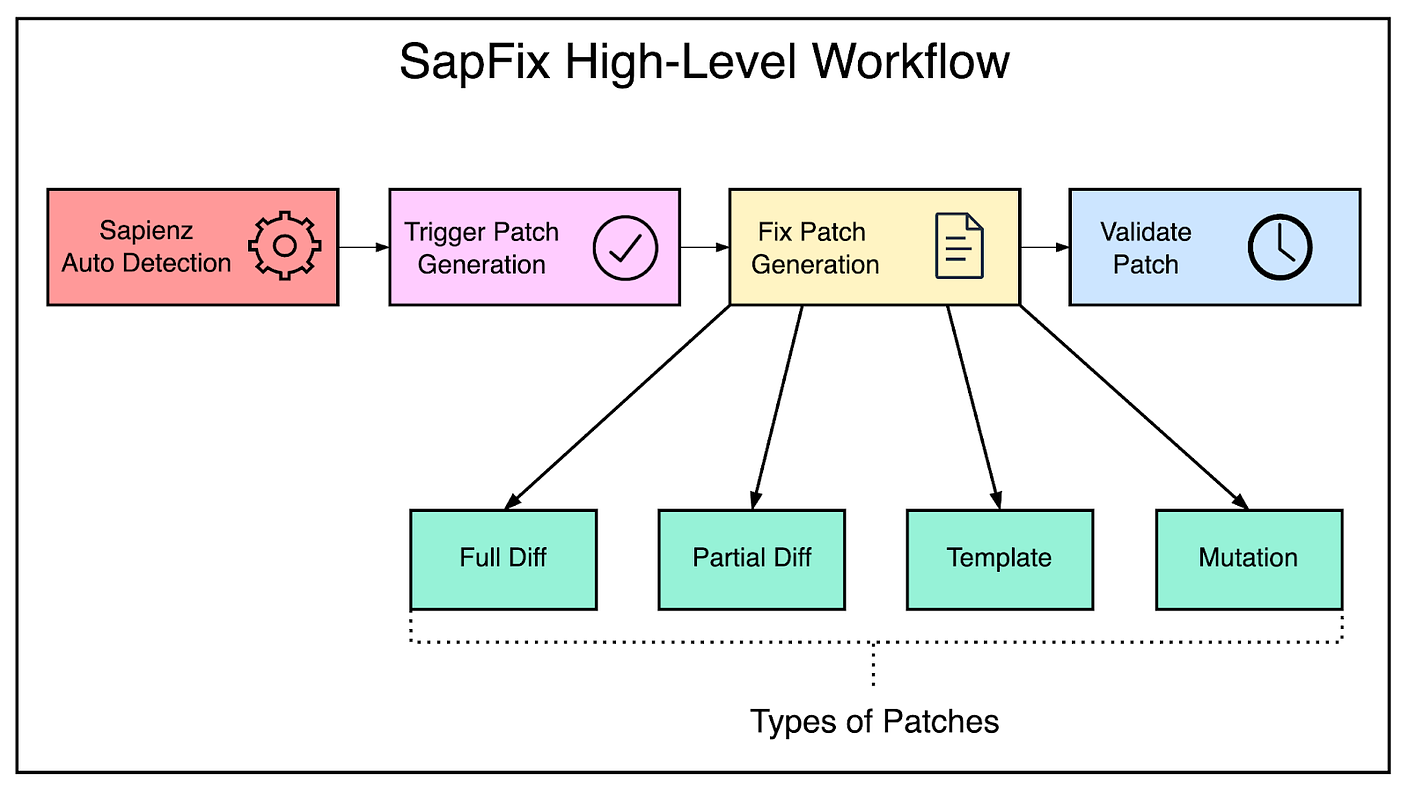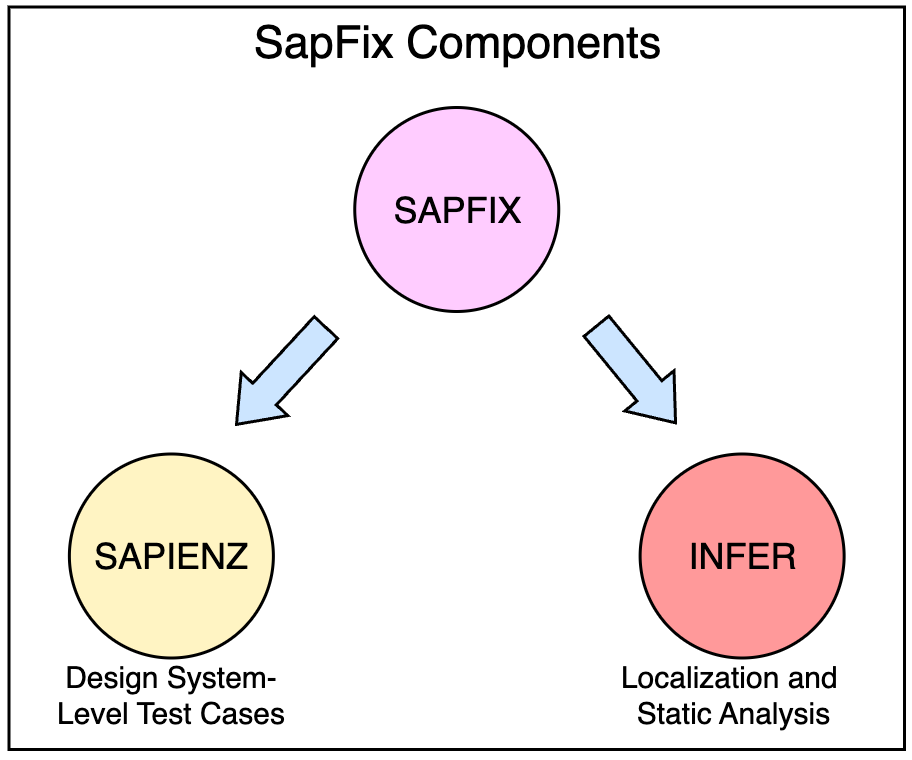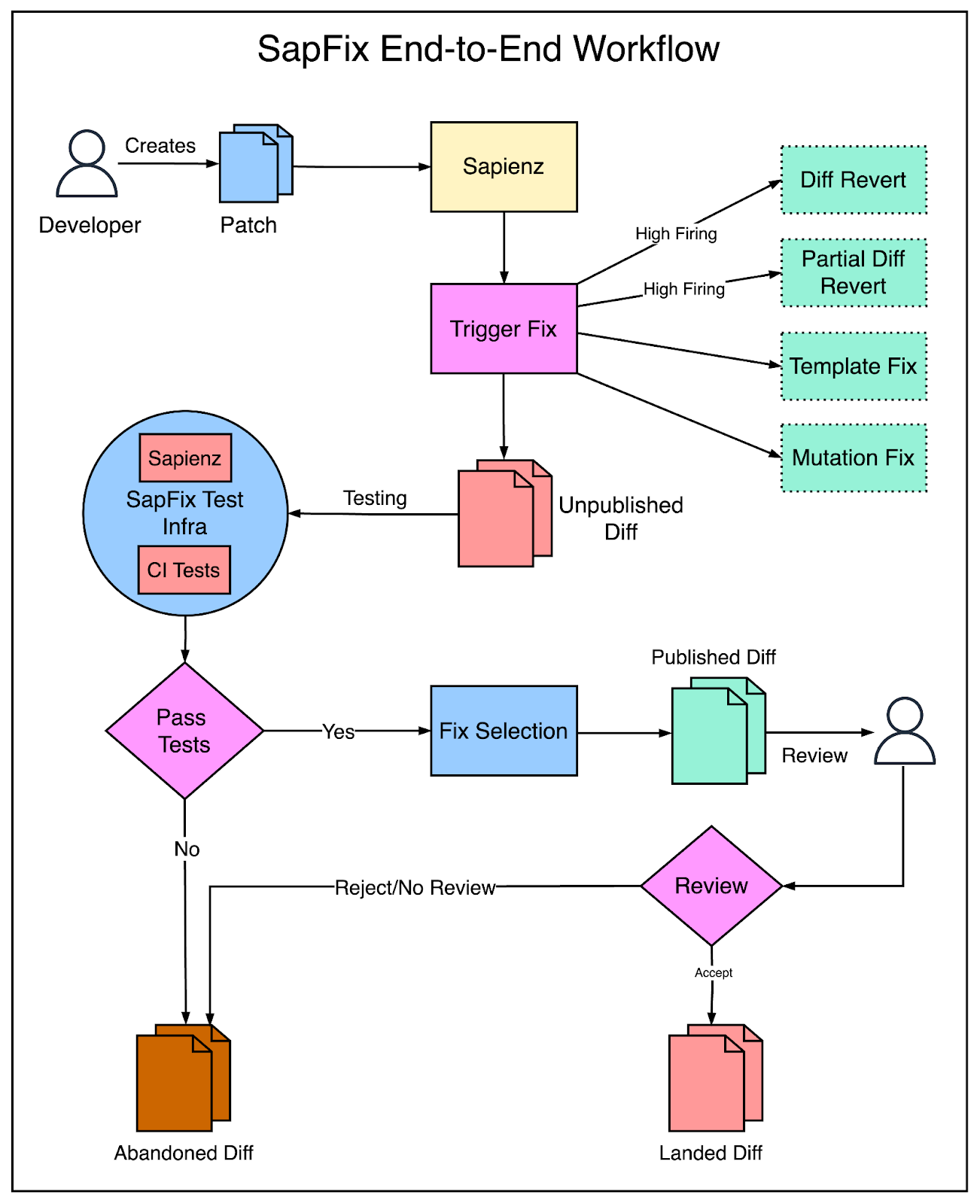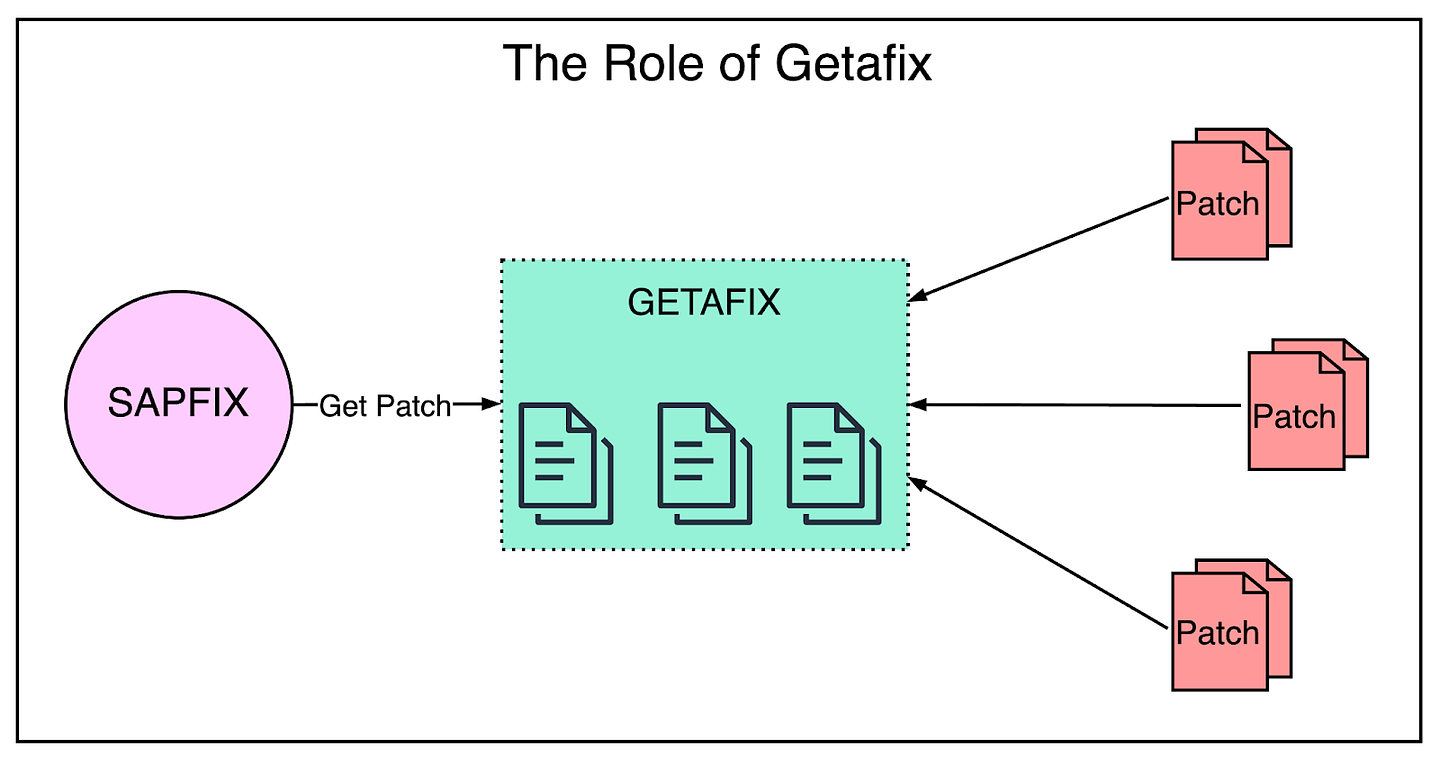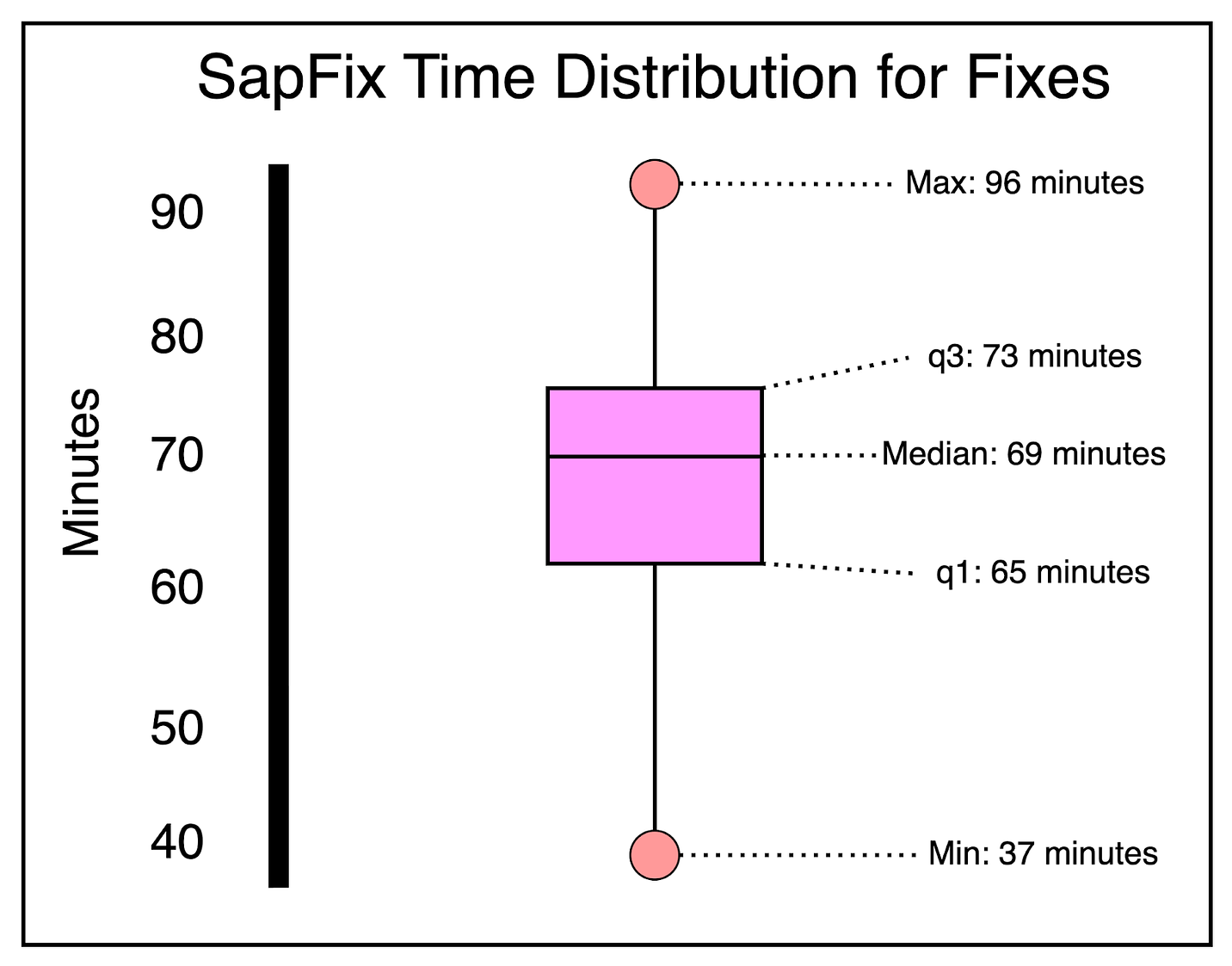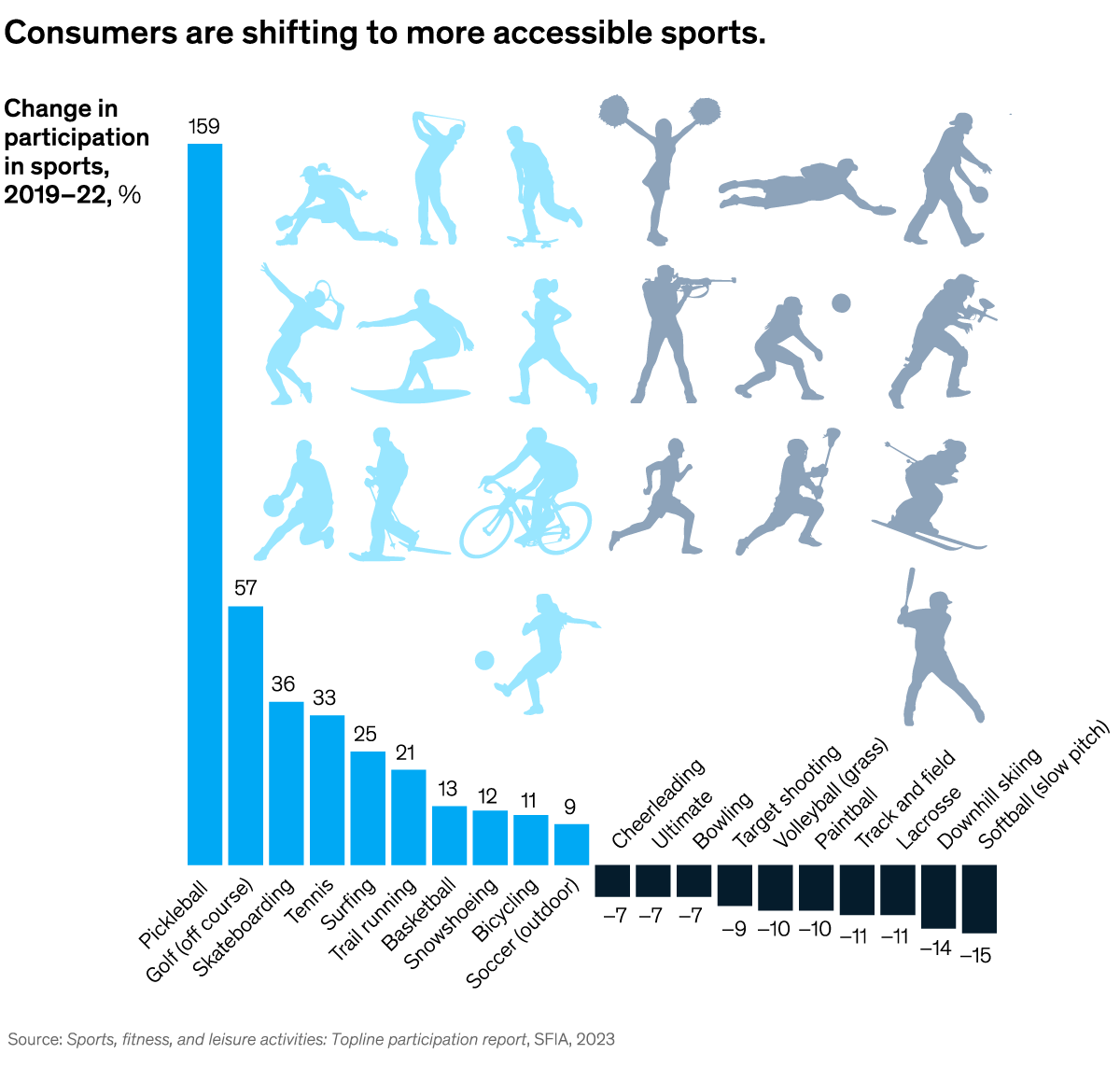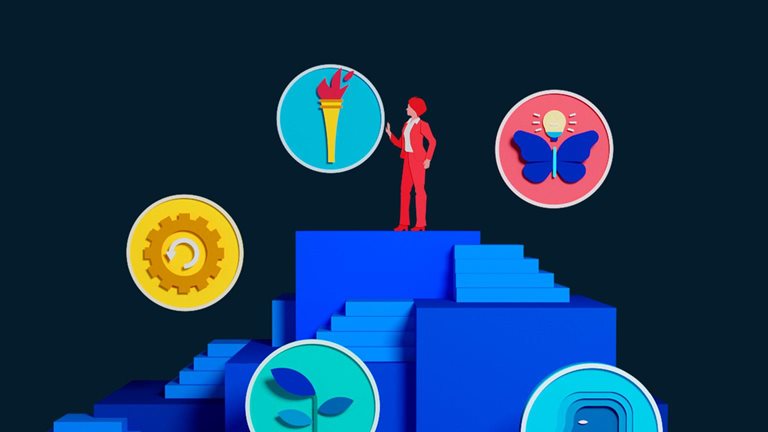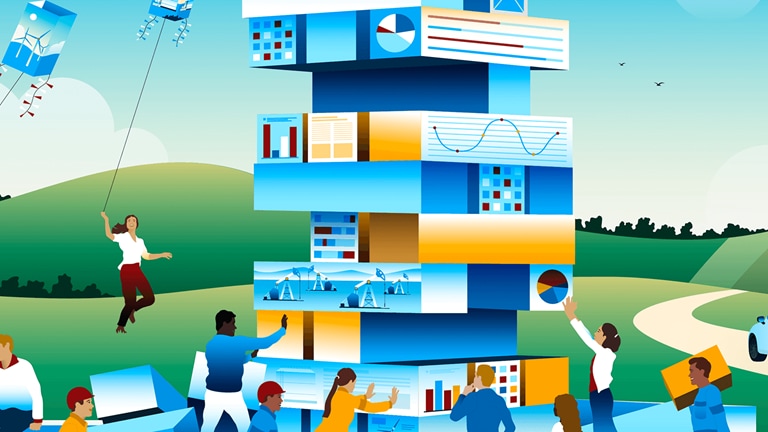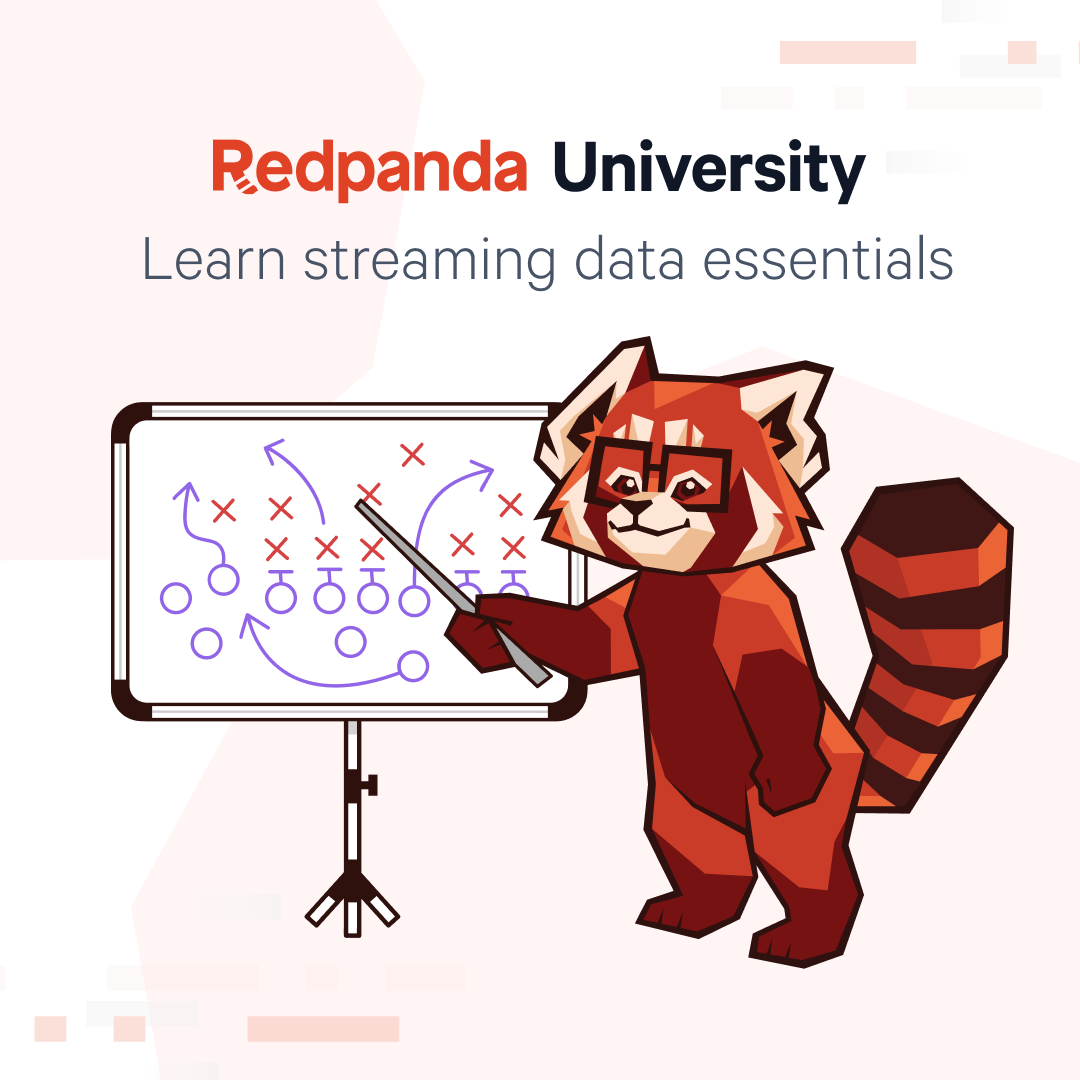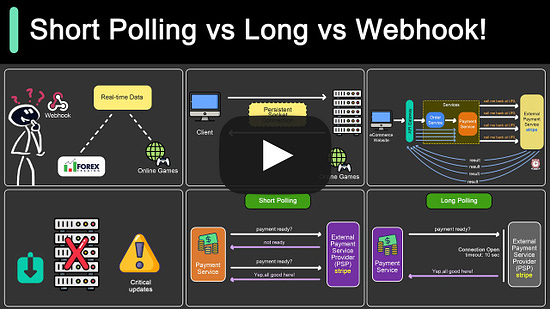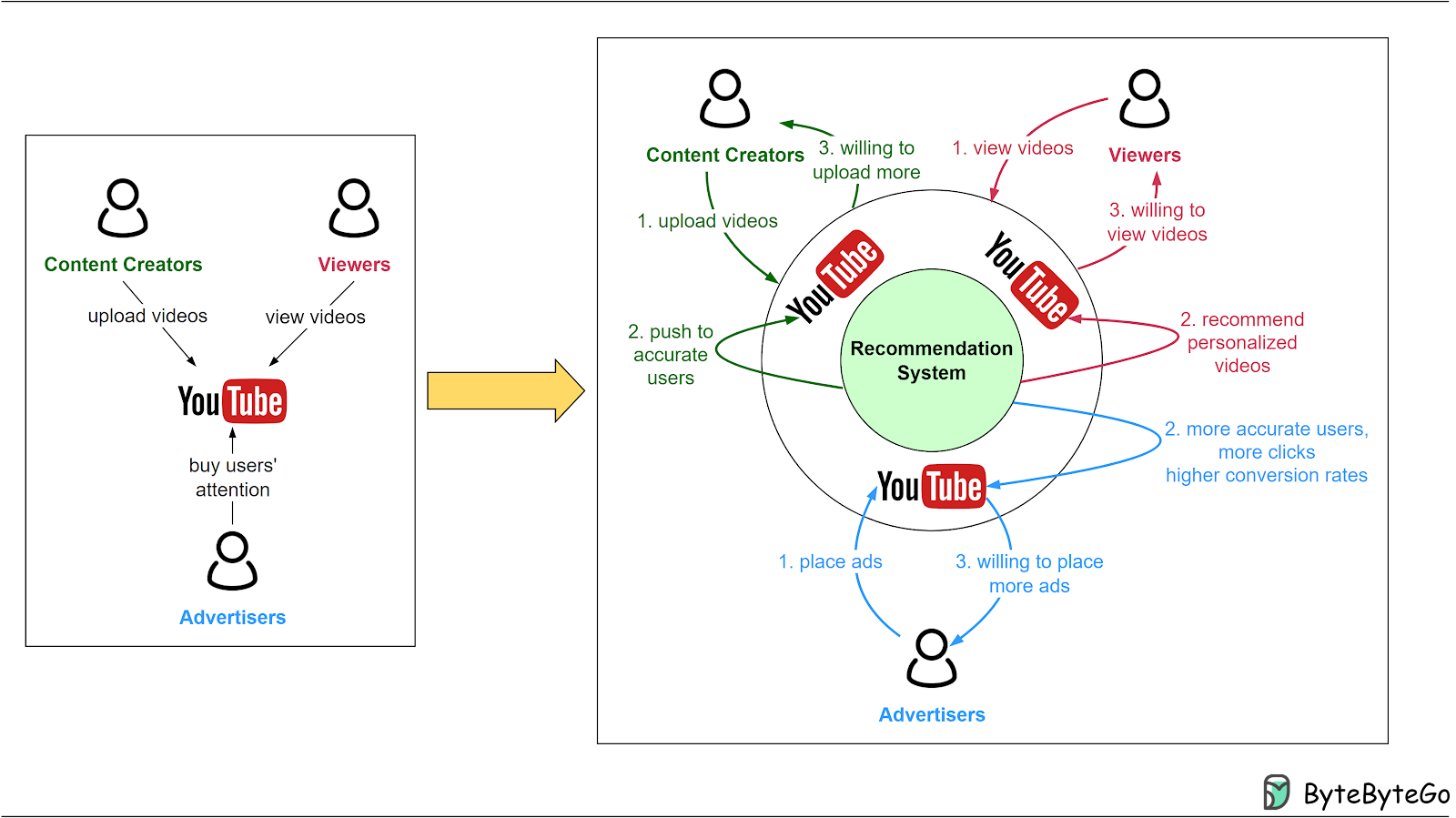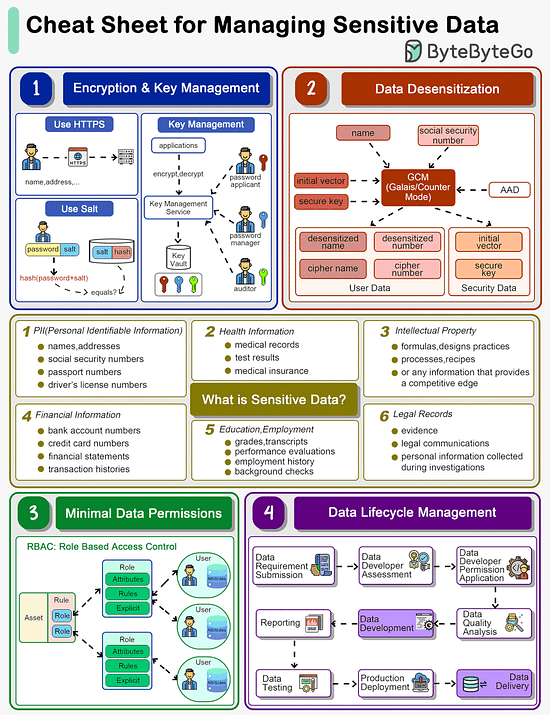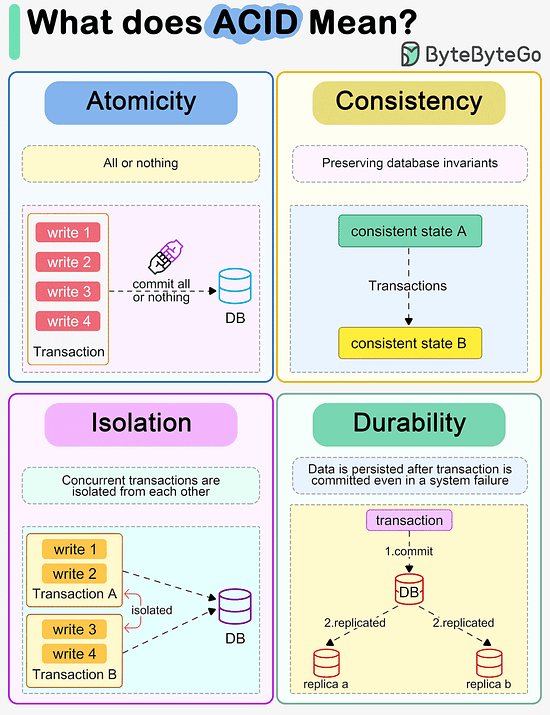Archives
- By thread 5371
-
By date
- June 2021 10
- July 2021 6
- August 2021 20
- September 2021 21
- October 2021 48
- November 2021 40
- December 2021 23
- January 2022 46
- February 2022 80
- March 2022 109
- April 2022 100
- May 2022 97
- June 2022 105
- July 2022 82
- August 2022 95
- September 2022 103
- October 2022 117
- November 2022 115
- December 2022 102
- January 2023 88
- February 2023 90
- March 2023 116
- April 2023 97
- May 2023 159
- June 2023 145
- July 2023 120
- August 2023 90
- September 2023 102
- October 2023 106
- November 2023 100
- December 2023 74
- January 2024 75
- February 2024 75
- March 2024 78
- April 2024 74
- May 2024 108
- June 2024 98
- July 2024 116
- August 2024 134
- September 2024 130
- October 2024 141
- November 2024 171
- December 2024 115
- January 2025 216
- February 2025 140
- March 2025 220
- April 2025 233
- May 2025 239
- June 2025 303
- July 2025 184
-
Gen AI—beyond the hype
The Shortlist
Four new insights
by "McKinsey CEO Shortlist" <publishing@email.mckinsey.com> - 02:07 - 8 Mar 2024 -
How a human-centered approach to AI can unlock the tech’s full potential
On Point
AI as copilot augments human expertise Brought to you by Liz Hilton Segel, chief client officer and managing partner, global industry practices, & Homayoun Hatami, managing partner, global client capabilities
•
Human-centered AI. Taking a human-focused approach to developing and using AI tools, including gen AI platforms, could not only improve performance but also reduce some of the fear and anxiety about AI, points out Stanford University professor Melissa Valentine on a recent episode of the McKinsey Talks Talent podcast. She’s joined by McKinsey partners Bryan Hancock and Brooke Weddle, along with global editorial director Lucia Rahilly, to explain how a human-centered approach could play out practically.
— Edited by Querida Anderson, senior editor, New York
This email contains information about McKinsey's research, insights, services, or events. By opening our emails or clicking on links, you agree to our use of cookies and web tracking technology. For more information on how we use and protect your information, please review our privacy policy.
You received this newsletter because you subscribed to the Only McKinsey newsletter, formerly called On Point.
Copyright © 2024 | McKinsey & Company, 3 World Trade Center, 175 Greenwich Street, New York, NY 10007
by "Only McKinsey" <publishing@email.mckinsey.com> - 01:23 - 8 Mar 2024 -
The Top 3 Resume Mistakes Costing You the Job
The Top 3 Resume Mistakes Costing You the Job
For this week's issue, I am pleased to introduce our guest author, Ethan Evans, a retired Amazon VP who played a pivotal role in creating some of the groundbreaking services we use today, such as Prime Video, Amazon Video, the Amazon Appstore, Prime Gaming (formerly Twitch Prime), and Twitch Commerce.͏ ͏ ͏ ͏ ͏ ͏ ͏ ͏ ͏ ͏ ͏ ͏ ͏ ͏ ͏ ͏ ͏ ͏ ͏ ͏ ͏ ͏ ͏ ͏ ͏ ͏ ͏ ͏ ͏ ͏ ͏ ͏ ͏ ͏ ͏ ͏ ͏ ͏ ͏ ͏ ͏ ͏ ͏ ͏ ͏ ͏ ͏ ͏ ͏ ͏ ͏ ͏ ͏ ͏ ͏ ͏ ͏ ͏ ͏ ͏ ͏ ͏ ͏ ͏ ͏ ͏ ͏ ͏ ͏ ͏ ͏ ͏ ͏ ͏ ͏ ͏ ͏ ͏ ͏ ͏ ͏ ͏ ͏ ͏ ͏ ͏ ͏ ͏ ͏ ͏ ͏ ͏ ͏ ͏ ͏ ͏ ͏ ͏ ͏ ͏ ͏ ͏ ͏ ͏ ͏ ͏ ͏ ͏ ͏ ͏ ͏ ͏ ͏ ͏ ͏ ͏ ͏ ͏ ͏ ͏ ͏ ͏ ͏ ͏ ͏ ͏ ͏ ͏ ͏ ͏ ͏ ͏ ͏ ͏ ͏ ͏ ͏ ͏ ͏ ͏ ͏ ͏ ͏ ͏ ͏ ͏ ͏ ͏ ͏ ͏ ͏ ͏ ͏ ͏ ͏ ͏ ͏ ͏ ͏ ͏ ͏ ͏ ͏ ͏ ͏ ͏ ͏ ͏ ͏ ͏ ͏ ͏ ͏ ͏ ͏ ͏ ͏ ͏ ͏ ͏ ͏ ͏ ͏ ͏ ͏ ͏ ͏ ͏ ͏ ͏ ͏ ͏ ͏ ͏ ͏ ͏ ͏ ͏ ͏ ͏ Forwarded this email? Subscribe here for moreLatest articles
If you’re not a subscriber, here’s what you missed this month.
To receive all the full articles and support ByteByteGo, consider subscribing:
For this week's issue, I am pleased to introduce our guest author, Ethan Evans, a retired Amazon VP who played a pivotal role in creating some of the groundbreaking services we use today, such as Prime Video, Amazon Video, the Amazon Appstore, Prime Gaming (formerly Twitch Prime), and Twitch Commerce.
Beyond his experience as an engineering leader, Ethan is also a career growth coach who has assisted numerous individuals to get unstuck and level up their careers.
We'll be discussing with Ethan one of the most critical steps in a job search: writing a great resume. Specifically, he'll cover the top three mistakes almost everyone makes when preparing their resume. He'll also delve into details on how to correct them.
If you would like to connect with Ethan, you can do so on Twitter and LinkedIn. Also, be sure to check out his newsletter and career community, Level Up, and explore his range of Leadership Development Courses, including live online classes and on-demand courses.
Ethan, here. I’ve reviewed more than 10,000 resumes in my career and conducted over 2,500 interviews. At Amazon and Twitch, I taught an internal class on how to interview, called “Making Great Hiring Decisions.” I was a “Bar Raiser,” which means I was someone from outside the hiring team designated to join an interview with the power to veto a hiring decision if I believed a candidate was wrong for the company.
Earlier in my career, despite my engineering background, I ran recruiting and had recruiters reporting directly to me at three startups. Today, I coach individuals through their job searches, and I have tested what does and doesn’t work. All this is to say, I know what recruiters and hiring managers want in a resume.
One thing I’ve observed is that 90% of resumes I see contain at least one of three major mistakes. In this article, I will walk you through each one and how to correct it, and then we’ll cover the smaller things you can do to take your resume to the next level; from good to amazing. Finally, we’ll conclude with how to know when to stop worrying about your resume and move on to the next phase of your job search.
Before we get into common errors, let’s briefly review the goals of a resume and what recruiters and hiring managers are looking for when they read one.
First, the goal of a resume is not to get you a job; it is to get you a call. If a resume results in someone reaching out to you, then it has done its job. One driver of mistakes on a resume is trying to make it do too much. We want to optimize our resume to get us on the phone, not to tell our life story.
You have probably heard that recruiters skim resumes in just a few seconds. This is true. Recruiters and managers are under tremendous pressure, and managers often think of hiring as something extra they have to do in addition to their “real” job. Therefore, a resume has to be optimized to quickly catch their eye. Even then, our goal is not for them to read every word, but rather simply for them to place it in the small pile of people to call, before they move on.
The Three Big Mistakes
90% of resumes I see make one or more of three mistakes. If you can address these, your resume will likely be good enough to get you a call.
No objective
Without an objective, a recruiter or hiring manager has to guess if you want their job. If you’re a recruiter with a pile of resumes, some of which state the candidate wants a job like the one you need to fill, and some of which do not, who do you call?
An objective states clearly what kind of role you are looking for in your next job, and a great objective is formulaic and short enough to be read in a single glance.
An example of the formula for a Senior Engineer role would be, “Seeking a role as a Sr. Engineer where I can apply my proven ability to ship scaled services to deliver valuable innovation for the business.”
Let's break this down.
The first part simply states the role you seek. This is particularly important if you are interested in doing something different from your last job. Without context, most people will assume you want to keep doing what you’ve been doing, possibly with a higher level title and more pay. But if you want to switch to management, or change from consulting to traditional corporate employment, then it’s essential you make this clear. Otherwise, people will keep putting you in the box defined by your past.
The second part, “... where I can apply my proven ability to X and Y…” gives you two chances to state your highest qualifications for a role. Right up front, you can highlight the top two reasons to put your resume in the “call” pile.
The third part, “... to create XYZ for the business” shows you are there to help the manager and the company. While you are looking for a “good job” for yourself, the manager is not focused on “giving someone a good job.” Instead, they want to find someone who can solve their problems and help them. Right up front, you want to convey that you are not just interested in yourself, but that you are also dedicated to providing value to your new manager.
I have gotten pushback on the first part of this formula because some people worry that if they clearly state a target role, they will miss out on other possible roles with different levels or titles which they might fit. This is possible, but there are two reasons why it’s best to state a clear objective.
First, there are many candidates for every role. Just like with search results, it is better to be the first choice for one job, than the seventh choice for ten jobs. If the top three candidates get calls, you want to get one call rather than fall below the line on all of them.
Second, you can always have multiple versions of your resume. You can state your objective of securing an “engineering leadership” role on one, and a “product leadership” role on another – if you are qualified for both. Then you can use them for different types of roles.
Let’s look at a few examples:
Organizing Chaos | Managing Change | Driving Efficiency
I am a driven, passionate, action-oriented leader that turns problems into streamlined processes. I led the turnaround of a $10M product line, with a 15,000 basis point (150%) margin improvement (from -125% to +25%) during the 19 months that I managed the products sourcing and operations fulfillment department.
With a background encompassing program, product, and people management, accounting and finance, legal and risk, business operations, analytics, and digital marketing. I’m a multipotentialite who enjoys applying a broad range of experiences and knowledge to new situations. I push myself out of the comfort zone, tackling projects without previous subject matter experience but with ability to quickly obtain visibility into how people with different functions operate. I thrive in organizing chaos: finding and connecting the pieces others often don’t see and building new mechanisms to improve the way we work. My agility, ability to deal with ambiguity, strong business acumen, and relentless search for a challenge, make me the perfect fit for a growing organization undergoing change or in need of transformation.
This is a typical opening section I see on a resume. While the opening paragraph contains an excellent numerical example of a big accomplishment, the second paragraph is seven full lines in which the candidate just talks about themselves in positive terms. It has no data to back anything up and is just a big block of text that most recruiters will skip right over.
Effective and accomplished executive with broad range of experience in finance, operations, strategy, M&A, fundraising, human resources, data analysis, and digital marketing. Proven success in building companies and teams in high growth environments to scale profitability.
This second example is much shorter and more likely to be read, but gets into a long list of disparate areas, leaving the reader wondering what kind of job the candidate actually wants.
Objective: Provide professional development at scale, guiding transitions to executive leadership.
Proven executive leadership of multiple $500M+ businesses across games, video, apps, and music. Global leadership experience of teams of 800+. Technical inventor; 60+ issued patents.This final example is from my own Executive Coaching resume. It explains in one line what I provide, and then gives two lines containing key examples of my accomplishments that support my ability to do this effectively.
No results, only activities
This is the single most common mistake I see on resumes.
People write down what they did, describe their activities such as that they wrote code, managed a number of people, or worked on this or that project. Some even list their most boring activities, like creating reports or organizing files.
Writing down your work makes you a worker. You will be interviewed and leveled as someone who can be assigned work to do.
Senior performers know that they are valued for their impact rather than their activities. They make a point to show the results of their work, the impact on a team, company, or business.
Consider the difference between:
“As a part of Project X, wrote Java code to implement several critical microservices.”
And
“As a part of Project X, wrote Java code for several critical microservices, allowing it to support enterprise environments, resulting in several key new customers buying the product.”
Which engineer sounds more senior and valuable?
It is usually possible to rewrite nearly every bullet on your resume in a way that describes why your work mattered, not just what you did. Try to show that your presence made a positive difference to a team, product, and the bottom line.
The good news is that there are advanced tricks you can use to make this compelling:
If possible, link to your results. People exaggerate and lie on resumes whereas nothing says “my work is real,” like a link to the project.
The human eye is automatically drawn to bold. You can selectively bold a few keywords or phrases to ensure your very strongest accomplishments are noticed.
Use action verbs, such as ‘owned,’ ‘built,’ ‘drove,’ or ‘delivered’ to give your bullets an “active voice.” This suggests you actively did something, rather than just be passively present when it happened
People believe specific numbers. Resumes with numeric results in the bullets get 132% more calls than those without them. I just made that point up, but I bet you believed it.
Where possible, include dollar figures if relevant to the results.
Let’s apply this to our example and see how strong it becomes:
“Delivered several critical microservices in Java for Project X, allowing it to support enterprise environments. This resulted in a 74% increase in service usage, including adoption by several key new customers, generating $29M in incremental revenue.”
Now, who do you think the company wants to hire?
Let’s look at some real examples of the differences between generic resume bullets not focused on numeric results, and compare them to some designed to showcase results.
Typical bullets:
Manage information technology for the organization, access control, security, and onboarding/offboarding users.
Draft, monitor, and maintain policies and procedures to support the organization’s information technology.
Develop relationships with vendors and partners for supply chain, on-site network infrastructure, information security, and software lifecycle.
Develop and manage a roadmap for changes to systems architecture. Ensure transparency of roadmap and timeline, and communicate often with stakeholders about the status of work.
Partner with internal stakeholders to develop processes and system recommendations.
Manage enterprise systems projects and ensure that projects are completed accurately and on time.
Evaluate end user needs, organizational goals, budgets, and existing applications to define system requirements and technical standards.
Bullets with clear, numeric results:
Planned, built, and deployed 100% cloud and SaaS infrastructure in a greenfield startup.
Fully automated employee hardware lifecycle, reducing onboarding time per employee from 2 hours to 10 minutes.
Engineered and deployed scalable blueprint for SD-WAN networks for an organization of 1,000+ schools.
Created and deployed end-user knowledge base, reducing engineering support tickets from 50 per week to 5 per week and a time-to-close metric of 15 minutes.
Next, let’s look at the same job from a real resume, described in two different ways. The first description is typical and tells you what the person did. The second description is the exact same content, but it’s organized to emphasize impact, and show active leadership of projects...
Keep reading with a 7-day free trial
Subscribe to ByteByteGo Newsletter to keep reading this post and get 7 days of free access to the full post archives.
A subscription gets you:
An extra deep dive on Thursdays Full archive Many expense it with team's learning budget Like
Comment
Restack
© 2024 ByteByteGo
548 Market Street PMB 72296, San Francisco, CA 94104
Unsubscribe
by "ByteByteGo" <bytebytego@substack.com> - 11:40 - 7 Mar 2024 -
[Online workshop] Dashboard techniques to visualize system and business performance
New Relic
 Take visualizations to the next level by joining this hands-on workshop that will help elevate your dashboard skills. Register for this free online workshop on 21st March at 10 AM GMT/ 11 AM CET and learn how to build powerful dashboards to help you understand your systems, troubleshoot more efficiently, and correlate performance metrics with business KPIs.
Take visualizations to the next level by joining this hands-on workshop that will help elevate your dashboard skills. Register for this free online workshop on 21st March at 10 AM GMT/ 11 AM CET and learn how to build powerful dashboards to help you understand your systems, troubleshoot more efficiently, and correlate performance metrics with business KPIs.
In the workshop, you'll learn how to:
- Explore the data you collect, build custom charts, and create data-rich dashboards
- Learn about powerful dashboard features that enable you to link, filter, and share them for more powerful troubleshooting and data correlation.
Prerequisites: There are no prerequisites but we recommend basic familiarity with the New Relic Query Language NRQL or have taken the Practitioner Learning Path on learn.newrelic.com to get most value from this workshop.
Register now Need help? Let's get in touch.



This email is sent from an account used for sending messages only. Please do not reply to this email to contact us—we will not get your response.
This email was sent to info@learn.odoo.com Update your email preferences.
For information about our privacy practices, see our Privacy Policy.
Need to contact New Relic? You can chat or call us at +44 20 3859 9190.
Strand Bridge House, 138-142 Strand, London WC2R 1HH
© 2024 New Relic, Inc. All rights reserved. New Relic logo are trademarks of New Relic, Inc

by "New Relic" <emeamarketing@newrelic.com> - 06:07 - 7 Mar 2024 -
Which tech trends can add value?
On Point
A four-point guide for CIOs Brought to you by Liz Hilton Segel, chief client officer and managing partner, global industry practices, & Homayoun Hatami, managing partner, global client capabilities
•
CIOs and tech trends. For modern CIOs, the ability to evaluate tech trends quickly and communicate their relevance to the business is becoming a critical capability, McKinsey partner Oliver Bossert and senior partner Gérard Richter explain. In practice, it is rarely as simple as saying “yes” or “no” to an investment in a particular trend. CIOs need a clear set of parameters to rely on both for evaluating trends and for determining which posture to take for engagement with them: first mover, fast follower, slow adopter, or sometimes non-partaker.
— Edited by Belinda Yu, editor, Atlanta
This email contains information about McKinsey's research, insights, services, or events. By opening our emails or clicking on links, you agree to our use of cookies and web tracking technology. For more information on how we use and protect your information, please review our privacy policy.
You received this newsletter because you subscribed to the Only McKinsey newsletter, formerly called On Point.
Copyright © 2024 | McKinsey & Company, 3 World Trade Center, 175 Greenwich Street, New York, NY 10007
by "Only McKinsey" <publishing@email.mckinsey.com> - 11:13 - 6 Mar 2024 -
Route Optimization Software - Automate the planning and scheduling of your fleets.
Route Optimization Software - Automate the planning and scheduling of your fleets.
Optimize Routes for Increased Efficiency, Reduced Costs, and Improved Customer Satisfaction.
Optimize Routes for Increased Efficiency, Reduced Costs, and Improved Customer Satisfaction.
Catch a glimpse of what our Route Optimisation has to offer



Uffizio Technologies Pvt. Ltd., 4th Floor, Metropolis, Opp. S.T Workshop, Valsad, Gujarat, 396001, India
by "Sunny Thakur" <sunny.thakur@uffizio.com> - 07:00 - 6 Mar 2024 -
Will gen AI become the ultimate doctor’s assistant?
Re:think
Generative AI can transform healthcare FRESH TAKES ON BIG IDEAS
ON GEN AI IN HEALTHCARE
The power of generative AI to transform the patient experienceDelphine Nain Zurkiya
AI has been used in healthcare for a while now, often in ways that patients don’t see. For example, AI is used to optimize a hospital’s workforce and inventory, making sure the facility is properly staffed and supplied. However, McKinsey research reveals that the healthcare field is behind most other industries in adopting AI. It’s a very fragmented industry, with tons of hospitals. And the systems that have been used in those hospitals have tended to be bespoke, which makes it difficult to copy innovations specific to one care setting and paste them to another. Another issue has been data, which has been siloed within hospital walls and has not been transferable to other hospitals.
But generative AI (gen AI) changes several dynamics. Large language models are applicable for many, though not all, use cases. This is a paradigm shift because it allows developers to focus on making an existing algorithm work as opposed to creating the algorithm in the first place. If most of your time is spent getting an off-the-shelf algorithm to work better, you can turn your attention to the quality of your data, getting more data, and making sure that users adopt gen AI. I think that’s where we’re seeing a lot of focus, which is pretty exciting in being able to unlock value.
Here’s one example. In hospitals, data is contained in electronic medical records. This might be data from devices like implants or scans like MRIs and ultrasounds, or it might be data about prior encounters that patients have had in other hospital systems. There are third parties thinking about how we can anonymize, or “tokenize,” all this data so that it can be shared across hospital walls. One use would be to improve clinical trials by making it easier to find the patients who would be most likely to benefit from a particular trial. My prediction is that we’re going to go beyond improving operational tasks and start seeing gen AI used to support clinical decisions, which, up to now, we haven’t seen so much. That said, it will be essential to keep a human in the loop, since the technology can “hallucinate” and will need to be monitored.“My prediction is that we’re going to go beyond improving operational tasks and start seeing gen AI used to support clinical decisions.”
What will this look like for healthcare consumers? You might notice that during an appointment, physicians now look you in the eye the entire time that they are talking to you as opposed to typing on a keyboard for part of it because the visit is being documented automatically. Or you might have less friction when scheduling appointments because you will no longer need to call the front office and wait for them to find a slot that works for you. Instead, it could be much more like talking to an automated system, doing the back-and-forth the way you might interact with ChatGPT. For clinical questions, right now, you have to wait to talk to a human, and we all know that it can be hard to get your physician on the phone if you don’t have a scheduled appointment. I believe that gen AI may be able to point you toward the right sources of information. Eventually, you may talk to a human, but before that happens, gen AI could potentially help patients with quite a bit. It could be like everyone having a doctor in their family, which would democratize the flow of information that gets to patients.
Will it make the population healthier? I’m an optimist, so I think that it will. There is plenty of data showing that one thing that gets in the way of good care is the ability to make fast, informed decisions. Another is ensuring that patients actually show up for and follow through on their treatment. My hope is that we develop a way for gen AI to interact with patients that helps them understand their treatments.
Of course, all of this depends on whether the technology is embraced, especially by healthcare providers. And right now, I think that many see it as a threat or yet another complicated thing to learn. Many people would just rather keep their existing workflows and not have to deal with these kinds of changes. But if they see the value in either saving time or taking away bothersome or onerous tasks, they will start to adopt it. There’s a phrase that I really like: gen AI doesn’t have a technology issue; gen AI has a design issue. The technology generally works pretty well. But now we need design folks to think more about what it will take for the healthcare industry to adopt it. When these systems are well designed, with users in mind, that’s when you’ll see it take off.ABOUT THIS AUTHOR
Delphine Nain Zurkiya is a senior partner in McKinsey’s Boston office.
MORE FROM THIS AUTHOR
UP NEXT
Miklós Dietz on the future of banking
Ten years from now, a successful bank might be a platform of networks—a holding company for a collection of starkly different businesses.
This email contains information about McKinsey’s research, insights, services, or events. By opening our emails or clicking on links, you agree to our use of cookies and web tracking technology. For more information on how we use and protect your information, please review our privacy policy.
You received this email because you subscribed to our McKinsey Quarterly alert list.
Copyright © 2024 | McKinsey & Company, 3 World Trade Center, 175 Greenwich Street, New York, NY 10007
by "McKinsey Quarterly" <publishing@email.mckinsey.com> - 04:49 - 6 Mar 2024 -
What’s the latest with the global economy?
On Point
Key trends and risks Brought to you by Liz Hilton Segel, chief client officer and managing partner, global industry practices, & Homayoun Hatami, managing partner, global client capabilities
•
A resilient economy. The global economy is still throwing off mixed signals, with data pointing to an uncertain year. Nonetheless, the economy has been “surprisingly resilient,” buoyed by (among other factors) the continued strength of the US economy as well as fiscal spending in China, the International Monetary Fund recently noted. Inflation’s downward trend has admittedly faltered in some advanced economies. Even so, most central banks have kept prices under control, McKinsey Global Institute chair Sven Smit and coauthors report.
•
Global trends. In the US, consumer sentiment is upbeat, as the nation’s economic growth outpaced Europe’s performance. US GDP rose 3.1% year over year in the fourth quarter of 2023 and 3.3% in the annualized quarter-over-quarter rate, beating earlier economic projections of 2.0% GDP growth in 2023. Meanwhile, although eurozone GDP contracted in the third quarter of 2023, Europe’s economy is expected to recover, thanks to rising real incomes. Read the McKinsey Global Economics Intelligence executive summary to see the latest global economic trends.
— Edited by Belinda Yu, editor, Atlanta
This email contains information about McKinsey's research, insights, services, or events. By opening our emails or clicking on links, you agree to our use of cookies and web tracking technology. For more information on how we use and protect your information, please review our privacy policy.
You received this newsletter because you subscribed to the Only McKinsey newsletter, formerly called On Point.
Copyright © 2024 | McKinsey & Company, 3 World Trade Center, 175 Greenwich Street, New York, NY 10007
by "Only McKinsey" <publishing@email.mckinsey.com> - 01:30 - 6 Mar 2024 -
Automated Bug Fixing at Facebook Scale
Automated Bug Fixing at Facebook Scale
📌Save the Date! Innovate Faster with AI Code Generation (Sponsored) With AI code generation tools developers can accelerate timelines at a pace and cost that would have been unfathomable just years ago. However, code generated by AI can include bugs and errors, and readability, maintainability, and security issues – just like code produced by developers.͏ ͏ ͏ ͏ ͏ ͏ ͏ ͏ ͏ ͏ ͏ ͏ ͏ ͏ ͏ ͏ ͏ ͏ ͏ ͏ ͏ ͏ ͏ ͏ ͏ ͏ ͏ ͏ ͏ ͏ ͏ ͏ ͏ ͏ ͏ ͏ ͏ ͏ ͏ ͏ ͏ ͏ ͏ ͏ ͏ ͏ ͏ ͏ ͏ ͏ ͏ ͏ ͏ ͏ ͏ ͏ ͏ ͏ ͏ ͏ ͏ ͏ ͏ ͏ ͏ ͏ ͏ ͏ ͏ ͏ ͏ ͏ ͏ ͏ ͏ ͏ ͏ ͏ ͏ ͏ ͏ ͏ ͏ ͏ ͏ ͏ ͏ ͏ ͏ ͏ ͏ ͏ ͏ ͏ ͏ ͏ ͏ ͏ ͏ ͏ ͏ ͏ ͏ ͏ ͏ ͏ ͏ ͏ ͏ ͏ ͏ ͏ ͏ ͏ ͏ ͏ ͏ ͏ ͏ ͏ ͏ ͏ ͏ ͏ ͏ ͏ ͏ ͏ ͏ ͏ ͏ ͏ ͏ ͏ ͏ ͏ ͏ ͏ ͏ ͏ ͏ ͏ ͏ ͏ ͏ ͏ ͏ ͏ ͏ ͏ ͏ ͏ ͏ ͏ ͏ ͏ ͏ ͏ ͏ ͏ ͏ ͏ ͏ ͏ ͏ ͏ ͏ ͏ ͏ ͏ ͏ ͏ ͏ ͏ ͏ ͏ ͏ ͏ ͏ ͏ ͏ ͏ ͏ ͏ ͏ ͏ ͏ ͏ ͏ ͏ ͏ ͏ ͏ ͏ ͏ ͏ ͏ ͏ ͏ ͏ Forwarded this email? Subscribe here for more📌Save the Date! Innovate Faster with AI Code Generation (Sponsored)
With AI code generation tools developers can accelerate timelines at a pace and cost that would have been unfathomable just years ago. However, code generated by AI can include bugs and errors, and readability, maintainability, and security issues – just like code produced by developers.
Join Manish Kapur, Sr. Director, Product & Solution at Sonar, for “Code Faster, Write Cleaner using AI Coding Assistants and Sonar” on Wednesday, March 20th to dive into the world of AI-assisted coding! Attendees will learn best practices for integrating AI coding assistants into their development workflows as well as practical advice to nurture a culture of clean code.
If there’s one thing that a majority of developers truly hate, it’s debugging.
While debugging small programs isn’t fun, it can get incredibly irritating when you have to debug millions of lines of code on a Friday evening to find that elusive bug.
To make things worse, bugs (software or otherwise) are tenacious.
You get rid of one and two more show up. Just when you think you’ve finally fixed the issue and started testing things out, you realize that the patch you just made is causing another crash some other place within those million lines.
Before you know it, you are trudging your way through another bug hunt.
This is where SapFix projects itself as a game-changing tool in the field of automated bug fixing.
It’s a new AI hybrid tool created by Facebook with the goal of reducing the time engineers spend on debugging.
SapFix makes debugging easy by automatically generating fixes for specific issues and proposing those fixes to engineers for approval and deployment to production.
The below diagram shows the SapFix workflow at a high level. In a later section, we will see the entire process in even more detail.
It would be an understatement to say that SapFix has shown promise. Here are some facts worth considering:
SapFix has been used to suggest fixes for six key Android apps in the Facebook App family.
The apps are Facebook, Messenger, Instagram, FBLite, Workplace and Workchat.
Together, these apps consist of tens of millions of lines of code and are used daily by hundreds of millions of users worldwide.
If you think about it, those are 6 multi-million line code-bases and it’s still early development days for SapFix!
At this point, you might wonder how SapFix is able to generate fixes for so many diverse apps with wildly different uses ranging from communication to social media to building communities.
The Role of Sapienz and Infer
The secret sauce of SapFix is the adoption of automated program repair techniques.
These techniques are based on algorithms to identify, analyze and patch known software bugs without human intervention. One of the widely used approaches relies on software testing to direct the repair process.
This is where Facebook leverages its automated test case design system known as Sapienz.
Sapienz uses Search-based Software Engineering (SBSE) to automatically design system-level test cases for mobile apps. Executing those test cases allows Sapienz to find 100s of crashes per month even before they can be discovered by Facebook’s internal human testers.
Think of SBSE as having a super smart helper that looks through all the lines of code and tries different combinations to fix a problem. It's a lot like when you try different pieces of a puzzle until they fit just right.
As an estimate, Facebook’s engineers have been able to fix 75% of crashes reported by Sapienz. This indicates a very high signal-to-noise ratio for bug reports generated by Sapienz.
However, to improve this figure even further, Facebook also uses Infer.
Infer is an open-source tool that helps with localization and static analysis of the fixes proposed. Like Sapienz, Infer is also deployed directly onto Facebook’s internal continuous integration system and has access to the majority of Facebook’s code base.
Sapienz and Infer collaborate with each other to provide information to developers about potential bugs such as:
Localization of the likely root cause
The failing test scenario that helped identify the bug
However, Sapienz and Infer can only provide information and not save the developer’s time in actually fixing the issue. Sure, their collaboration helps identify bugs and their location within the code, but most of the work involved in fixing these bugs still falls to a developer.
This is where SapFix comes along and combines three important components to provide an end-to-end automated repair system:
Mutation-based technique supported by patterns generated from previous human fixes
The automated test design of Sapienz
Infer’s static analysis and localization infrastructure
From picking the test cases that detect the crash to fixing the issue and re-testing, SapFix takes care of the entire process as part of Facebook’s continuous integration and deployment system.
Latest articles
If you’re not a paid subscriber, here’s what you missed last month.
1. How Video Recommendations Work - Part 1
3. How do We Design for High Availability?
5. Mastering Design Principles - SOLID
To receive all the full articles and support ByteByteGo, consider subscribing:
The SapFix Workflow
How does SapFix actually work?
There are four types of fixes that are performed by SapFix:
Template Fix
Mutation Fix
Diff Revert
Partial Diff Revert
Below is a diagram that shows the entire workflow of how SapFix handles the process of fixing an issue based on these types.
At its core, the process is extremely simple to understand.
The fix creation process receives the below input:
The buggy revision and the blamed file that contains the crash location
The blamed line where the crash is supposed to be happening
Stack trace of the crash
The unique id of the crash
Author of the buggy revision (the developer who made the Diff)
Buggy expressions provided by Infer (this is null when Infer data isn’t available)
Based on this input, SapFix goes ahead and generates a list of revisions that can fix the crash. This list is created after SapFix has tested those revisions thoroughly.
From the input to output, there are several steps involved:
Developers submit changes (called ‘Diffs’) to be reviewed using Phabricator (Facebook’s continuous integration system)
SapFix uses Sapienz to select a few test cases to execute on each Diff submitted for review.
When Sapienz pinpoints a specific crash to the given Diff, SapFix establishes the priority of fix types (template, mutation, revert, etc).
SapFix proceeds to try and generate multiple potential fixes per bug and then evaluates their quality.
To do so, it runs existing, developer-written tests along with tests created by Sapienz on the patched builds. This validation process is autonomous and isolated from the larger codebase.
In essence, SapFix is kind of debugging the codebase just like developers currently do. Think of the puzzle-solving approach we talked about earlier. However, unlike developers, SapFix cannot deploy the fix to production on its own.
Once the patches are tested, SapFix selects one of the candidate patches and requests a human reviewer to review the change through the Phabricator Code Review system. The reviewer is chosen to be the software engineer who actually submitted the Diff that SapFix attempted to fix.
This is the engineer who most likely has the best technical context to evaluate the patch. However, other relevant engineers are also subscribed to each Diff based on Facebook’s code review standards. What this means is that all Diffs proposed by SapFix are guaranteed to have at least one qualified human reviewer.
The above flow may appear simple, but there are some additional nuances to it, and understanding those makes things clearer.
Template Fix and Mutation Fix
As the name suggests, the template fix and mutation fix strategies choose between template and mutation-based fixes.
Template-based fixes are favored when all other parameters are equal.
But where do these templates come from?
Template fixes come from another tool known as Getafix that generates patches similar to the ones human developers produced in the past. From the perspective of SapFix, Getafix is a black box that contains a bunch of template fix patterns harvested from previous successful fixes.
As far as the mutation fix strategy is concerned, SapFix currently only supports fixing Null Pointer Exception (NPE) crashes. Though Facebook has a plan to cover more mutation strategies, just focusing on NPE has also provided a good amount of success.
High Firing Crashes
If neither template-based nor mutation-based strategies produce a patch that passes all tests, SapFix attempts to revert Diffs that result in high-firing crashes.
High-firing crash is a software bug that occurs frequently or affects a large number of users.
There are a couple of reasons for reverting the diff instead of trying to patch:
High-firing crashes can block Sapienz and other testing technologies. Therefore, it’s important to delete or revert them from the master build as soon as possible.
High-firing bugs have a higher potential impact on the stability and reliability of the application.
The revert strategies (full and partial) basically delete the change made in the Diff. In practice, reverting can mean deletion, addition, or replacement of code in the current version of the system.
Between the two types of revert strategies, SapFix generally prefers full diff revert because partial diff revert has a higher probability of knock-on adverse effects.
However, new Diffs are generated every few seconds and full diff reverts can also fail due to merge conflicts with other revisions. In those cases, SapFix attempts to go for partial diff revert since the changes produced are smaller and less prone to merge conflicts.
SapFix Adoption Results
Over a period of 3 months, after SapFix was adopted, it tackled 57 crashes related to Null-Pointer Exceptions (NPE).
To handle these crashes, 165 patches were created (roughly half from template and half from mutation-based repair). Out of these 165 patches, 131 were correctly built and passed all tests. Finally, 55 were reported to the developers.
Also, initial reactions from the developers were quite positive. When going through the very first SapFix-proposed patch, the developers had the feeling of “living in the future”.
However, the time taken to generate a fix presented a slightly different issue.
The median time from fault detection to publishing a fix to the developer came out to be 69 minutes. The worst case was approximately 1.5 hours and the fastest one was 37 minutes after the crash was first detected.
As you can also see, the overall range of observed values is pretty wide.
The main reason for this is the computational complexity of fixing an issue and the variation in workloads on the CI/CD system.
Since SapFix is deployed in a highly parallel, asynchronous environment, the time from detection to publication is influenced by the current demand on the system and the availability of computing resources.
Lessons Learned from SapFix
Facebook’s main philosophy behind SapFix was to focus on the industrial deployment of an automated repair system rather than academic research. Therefore, most of the decisions were focused on this goal.
Though much remains to be done, Facebook also learned a lot of lessons from SapFix that they have shared.
Here are a few important ones:
End-to-end automated repair can work at an industrial scale
The role of developers as the final gatekeeper is critical to the success of SapFix. There is still a lot of work required to have automated oracles.
Reverting of diffs is useful for high-firing crashes in the master build of the system
SapFix works best with newly arising failures or crashes. With pre-existing crashes, the relevancy is reduced because the developer reviewing the patch may not have a sufficient overview of the code.
Developer sociology is important to take into account. Despite SapFix providing ready-to-use patches, the developers may still prefer to clone and own the changes instead of simply landing the patches suggested by SapFix.
Developers showed a good amount of interest in interacting with the SapFix bot.
SapFix focuses more on removing the symptom rather than addressing the root cause. This needs more work in terms of identifying the root cause of failures and trying to fix them.
References:
SPONSOR US
Get your product in front of more than 500,000 tech professionals.
Our newsletter puts your products and services directly in front of an audience that matters - hundreds of thousands of engineering leaders and senior engineers - who have influence over significant tech decisions and big purchases.
Space Fills Up Fast - Reserve Today
Ad spots typically sell out about 4 weeks in advance. To ensure your ad reaches this influential audience, reserve your space now by emailing hi@bytebytego.com.
Like
Comment
Restack
© 2024 ByteByteGo
548 Market Street PMB 72296, San Francisco, CA 94104
Unsubscribe
by "ByteByteGo" <bytebytego@substack.com> - 11:40 - 5 Mar 2024 -
Oops, we we made a mistake! Sorry about that.
Oops, we we made a mistake! Sorry about that.
Hi MD,
We we made a mistake!
We mistakenly sent out an email stating that our webinar, ASYNC Power Hour: Asynchronous Work in Action and Its Impact on Global Teams, is now live. However, our eager email system jumped the gun a bit. The webinar is actually scheduled to go live at 9am UTC on March 6th.
We apologize for any confusion this may have caused and hope you can join us for the webinar then.
Don't forget to grab our interactive Notion agenda while attending the webinar. It's filled with useful information, additional resources, and links to the tools and details discussed during the webinar. You can access the agenda here.
The HR platform for global businesses
Remote makes running global teams simple. Hire, manage, and pay anyone, anywhere.




You received this email because you are subscribed to News & Offers from Remote Europe Holding B.V
Update your email preferences to choose the types of emails you receive.
Unsubscribe from all future emailsRemote Europe Holding B.V
Copyright © 2024 All rights reserved.
Kraijenhoffstraat 137A 1018RG Amsterdam The Netherlands
by "Remote" <hello@remote-comms.com> - 04:51 - 5 Mar 2024 -
A road map to growth for Indian enterprises
On Point
Debunking 4 myths about growth Brought to you by Liz Hilton Segel, chief client officer and managing partner, global industry practices, & Homayoun Hatami, managing partner, global client capabilities
•
Remarkable growth. As India anticipates a century of independence in 2047, the country is likely to see its GDP increase to $19 trillion. How can Indian enterprises help the country achieve this extraordinary growth? Our analysis of 837 publicly traded companies in India revealed that, between 2012 and 2022, one in five companies doubled their revenue every five years and quadrupled it in ten, achieving revenue growth of 15% or more, compounded annually. This extraordinary growth rate could catalyze GDP growth in India, McKinsey senior partner Jaidit Brar and coauthors share.
— Edited by Belinda Yu, editor, Atlanta
This email contains information about McKinsey's research, insights, services, or events. By opening our emails or clicking on links, you agree to our use of cookies and web tracking technology. For more information on how we use and protect your information, please review our privacy policy.
You received this newsletter because you subscribed to the Only McKinsey newsletter, formerly called On Point.
Copyright © 2024 | McKinsey & Company, 3 World Trade Center, 175 Greenwich Street, New York, NY 10007
by "Only McKinsey" <publishing@email.mckinsey.com> - 01:25 - 5 Mar 2024 -
🚀 Our ASYNC Power Hour webinar is now live. Tune in.
🚀 Our ASYNC Power Hour webinar is now live. Tune in.
Hi MD,
Great news! 🎉 The "ASYNC Power Hour: Asynchronous Work in Action and Its Impact on Global Teams" is now live!
This webinar is your gateway to mastering async work dynamics 💼, featuring our CEO, Job van der Voort and other Remote leaders from around the world, as they share the blueprint for Remote's global async success.
Don't forget to grab our interactive Notion agenda while attending the webinar. It's filled with useful information, additional resources, and links to the tools and details discussed during the webinar. You can access the agenda here.
The HR platform for global businesses
Remote makes running global teams simple. Hire, manage, and pay anyone, anywhere.




You received this email because you are subscribed to News & Offers from Remote Europe Holding B.V
Update your email preferences to choose the types of emails you receive.
Unsubscribe from all future emailsRemote Europe Holding B.V
Copyright © 2024 All rights reserved.
Kraijenhoffstraat 137A 1018RG Amsterdam The Netherlands
by "Remote" <hello@remote-comms.com> - 12:00 - 5 Mar 2024 -
The rising tide of M&A: A leader’s guide
Let’s make a deal Brought to you by Liz Hilton Segel, chief client officer and managing partner, global industry practices, & Homayoun Hatami, managing partner, global client capabilities
Mergers and acquisitions, when executed well, are one of the most critical tools companies can use to create value. But they’re not always the most popular path to growth. This was certainly true in 2023, a tough year for M&A by many measures. Yet hope springs eternal, thanks to a late-in-the-year rebound in deal activity and continued confirmation that programmatic acquirers (companies that pursue multiple small or midsize acquisitions every year) outperform their competition. This week, we look at the reasons why M&A might matter now more than ever and the ways that companies can prepare for their next deal.
It’s been a volatile few years for the M&A market, which was in a bona fide slump in 2023. While the S&P 500 rose by 24 percent, global deal value and volume were both lower than in the pandemic year of 2020. Despite the glum statistics, McKinsey senior partners Jake Henry and Mieke Van Oostende are optimistic about M&A’s prospects. In their 2024 M&A activity report, they predict a growing appetite for deals due to a few factors: amid major changes in the business environment, M&A is strategically essential to competitiveness; macroeconomic concerns, such as inflation, are tempering; and many investors have a healthy amount of cash on hand. While the M&A opportunity varies by industry and region, the report points to steps that all companies can take to prepare for a potential groundswell of transactions. Among them: reevaluating the company’s M&A themes and strategies (divestitures included) that are most relevant to the business, investing in the capabilities and assets that will support future portfolio changes, and pursuing partnerships and alternative deal types, such as joint ventures, to mitigate potential risks and financing issues.
That’s how much money the world’s 2,000 largest companies (or the “Global 2000”) spent on deals in the past decade. With the right M&A blueprint and capabilities, the payoff from transactions can be huge. Yet even with so much value at stake, McKinsey’s Ignacio Fantaguzzi and Christopher Handscomb say that one important M&A capability, culture, is often overlooked. “Differences in cultures can exist at any level and can seriously disrupt operations and jeopardize integration,” they say. “Companies may differ in their cultures around decision making—one may have a top-down, directive culture while the other’s is consultative and process-driven.” To practice effective culture management, it’s important for organizations to recognize the differences in how work gets done, decide on a future culture for the integrated company, and develop a change story that will inspire the new culture (and related behavioral changes) to take root.
That’s McKinsey’s Jeff Rudnicki and colleagues on the virtues of a “healthy” corporate culture in large M&A deals, or transactions in which the deal is worth at least 30 percent of the acquirer’s market capitalization. While the odds for success in large deals are essentially a coin toss, Rudnicki and coauthors explain that a few traits of organizationally healthy acquirers help give these companies a competitive edge: they are rigorous in their selection and management of talent, focused on the deal’s value proposition (and actively communicate that to stakeholders), and disciplined in their process of integrating a target.
Long-running McKinsey research continues to demonstrate the value of a programmatic approach to M&A, in which dealmaking is treated as a continuous process, rather than an event, that requires a robust set of capabilities. Not only does a programmatic M&A strategy yield consistently better returns than all other approaches to transactions, but it can also be instrumental in boosting a company’s resilience. “To develop that muscle, you need to think about M&A holistically, starting with a link to strategy,” says McKinsey’s Patrick McCurdy in a recent episode of the Inside the Strategy Room podcast with Tobias Lundberg, Jeff Rudnicki, and Joanna Stone Herman, a partner at M&A advisory firm Oaklins DeSilva & Phillips. McCurdy and colleagues also identify what they call “the three Cs”—competitive advantage, conviction, and capacity—which can enable programmatic acquirers to continue pursuing deals, and finding success, even through a downturn.
Lead by doing your due diligence.
– Edited by Daniella Seiler, executive editor, Washington, DC
Share these insights
Did you enjoy this newsletter? Forward it to colleagues and friends so they can subscribe too. Was this issue forwarded to you? Sign up for it and sample our 40+ other free email subscriptions here.
This email contains information about McKinsey’s research, insights, services, or events. By opening our emails or clicking on links, you agree to our use of cookies and web tracking technology. For more information on how we use and protect your information, please review our privacy policy.
You received this email because you subscribed to the Leading Off newsletter.
Copyright © 2024 | McKinsey & Company, 3 World Trade Center, 175 Greenwich Street, New York, NY 10007
by "McKinsey Leading Off" <publishing@email.mckinsey.com> - 04:41 - 4 Mar 2024 -
What’s next for M&A in 2024?
On Point
M&A’s most active region Brought to you by Liz Hilton Segel, chief client officer and managing partner, global industry practices, & Homayoun Hatami, managing partner, global client capabilities
•
Vital for growth. M&A dealmakers have weathered a tough year, with global M&A activity in 2023 dropping to $3.1 trillion, a 16% decrease from 2022. Still, CEOs across industries say that M&A is a more vital strategy than ever, McKinsey senior partners Jake Henry and Mieke Van Oostende reveal. Companies that made more than two small to midsize deals annually over ten years through 2022 delivered a median excess TSR of 2.3%, McKinsey’s latest analysis of the world’s 2,000 largest public companies found.
— Edited by Belinda Yu, editor, Atlanta
This email contains information about McKinsey's research, insights, services, or events. By opening our emails or clicking on links, you agree to our use of cookies and web tracking technology. For more information on how we use and protect your information, please review our privacy policy.
You received this newsletter because you subscribed to the Only McKinsey newsletter, formerly called On Point.
Copyright © 2024 | McKinsey & Company, 3 World Trade Center, 175 Greenwich Street, New York, NY 10007
by "Only McKinsey" <publishing@email.mckinsey.com> - 01:28 - 4 Mar 2024 -
🚀 Don't miss out, sign up today for our upcoming webinar on async work.
🚀 Don't miss out, sign up today for our upcoming webinar on async work.
Discover how asynchronous work can redefine success for your global team.Hi MD,
⏰ There's still time to register for our upcoming webinar:
ASYNC Power Hour: Asynchronous work in action and its impact on global teams
This is a unique opportunity to unlock a wealth of knowledge on asynchronous work, from Remote CEO Job van der Voort, along side other Remote global team leaders.
Watch on-demand, starting March 6th, 2024. This pre-recorded webinar is all about embracing async. Why this format? Because learning should fit your schedule, not the other way around.
Agenda Highlights:
- Buzzword or Future of Work? 🤔 Remote CEO, Job van der Voort unpacks the reality of async work in a global organisation.
- Confessions from the People Team: 💬 Insights into cultivating an ASYNC culture from our global team leaders.
- Hiring for an ASYNC Workplace: 👥 Learn strategies for assembling a remote-ready team, featuring advice from our Director of Talent Acquisition, Anastasia Pshegodskaya.
- Managing an ASYNC Team: 💼 Discover lessons from our leadership, including firsthand experiences from Amanda Day, Senior Director of People Enablement.
👉 Sign Up Now 👈 for an enriching experience that blends insights with practical strategies.
The HR platform for global businesses
Remote makes running global teams simple.
Hire, manage, and pay anyone, anywhere.



You received this email because you are subscribed to News & Offers from Remote Europe Holding B.V
Update your email preferences to choose the types of emails you receive.
Unsubscribe from all future emailsRemote Europe Holding B.V
Copyright © 2024 All rights reserved.
Kraijenhoffstraat 137A 1018RG Amsterdam The Netherlands
by "Remote" <hello@remote-comms.com> - 12:00 - 3 Mar 2024 -
The week in charts
The Week in Charts
Pickleball’s popularity, natural gas imports, and more Share these insights
Did you enjoy this newsletter? Forward it to colleagues and friends so they can subscribe too. Was this issue forwarded to you? Sign up for it and sample our 40+ other free email subscriptions here.
This email contains information about McKinsey's research, insights, services, or events. By opening our emails or clicking on links, you agree to our use of cookies and web tracking technology. For more information on how we use and protect your information, please review our privacy policy.
You received this email because you subscribed to The Week in Charts newsletter.
Copyright © 2024 | McKinsey & Company, 3 World Trade Center, 175 Greenwich Street, New York, NY 10007
by "McKinsey Week in Charts" <publishing@email.mckinsey.com> - 03:38 - 2 Mar 2024 -
How CEOs assess their performance
Plus, harnessing the power of gen AI in energy The CEO role is challenging, demanding, and important—particularly in today’s uniquely tough operating environment. But how are CEOs actually performing, and what can they do to reach their full potential? As we approach the second anniversary of the release of CEO Excellence, the best-selling book by McKinsey’s Carolyn Dewar, Scott Keller, and Vikram Malhotra, we look at how CEOs can succeed across their leadership journey. Our first featured story explores early results from our proprietary CEO Excellence Assessment Tool, which offer insights into the key issues facing more than 100 CEOs who primarily lead companies headquartered in Asia across 17 major industries. Our second featured story dives into how CEOs can excel at every stage of their journey: preparing for the role, transitioning into the role, navigating the middle years, and transitioning out of the role. Other highlights in this month’s issue include the following topics:

Beyond the hype: New opportunities for gen AI in energy and materials
Generative AI can create additional value from other forms of AI and analytics—and the energy and materials sector is uniquely well-positioned to benefit from these advancements.
Harness the power
Organizational health is (still) the key to long-term performance
McKinsey’s latest findings on organizational health demonstrate that it remains the best predictor of value creation and a sustainable source of competitive advantage in today’s global marketplace.
See the results
The state of Black residents: The relevance of place to racial equity and outcomes
At the current pace of change, it could take decades to improve outcomes for Black Americans and more than three centuries to get to racial parity. How can different types of communities move closer to delivering a better quality of life for all residents?
Change the trajectory
Top M&A trends in 2024: Blueprint for success in the next wave of deals
Will 2024 launch a bright new era for M&A? Anticipating what could be an inflection point, many dealmakers are preparing for a surge—and new market requirements—in the year ahead.
See what’s ahead
What to expect from medtech in 2024
Our medtech predictions for the year ahead were inspired by conversations with more than 200 industry leaders and informed by McKinsey’s latest decade-ahead medtech report.
Be energized
Spark & Sustain: How all of the world’s school systems can improve learning at scale
Student achievement is stagnating globally and millions of children are not learning, but meaningful change is possible by taking lessons from systems that are beating the odds.
Beat the odds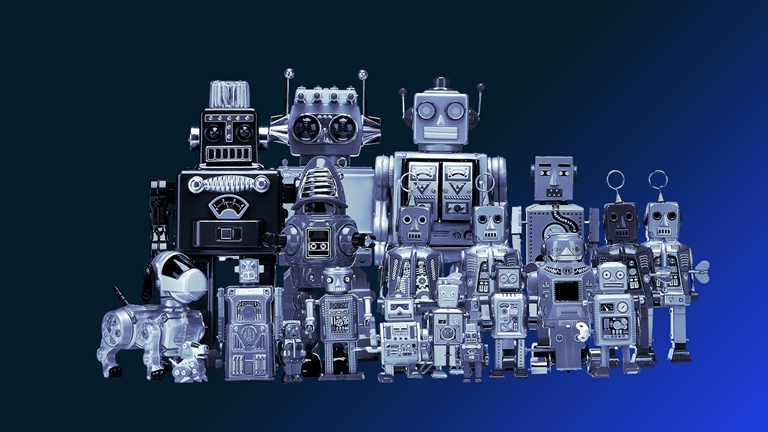
McKinsey Themes
Browse our essential reading on the topics that matter.
Get up to speed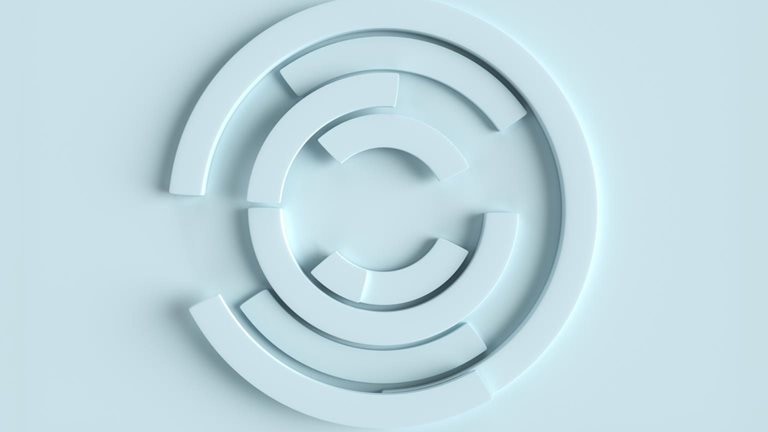
McKinsey Explainers
Find direct answers to complex questions, backed by McKinsey’s expert insights.
Learn more
McKinsey on Books
Explore this month’s best-selling business books prepared exclusively for McKinsey Publishing by Circana.
See the lists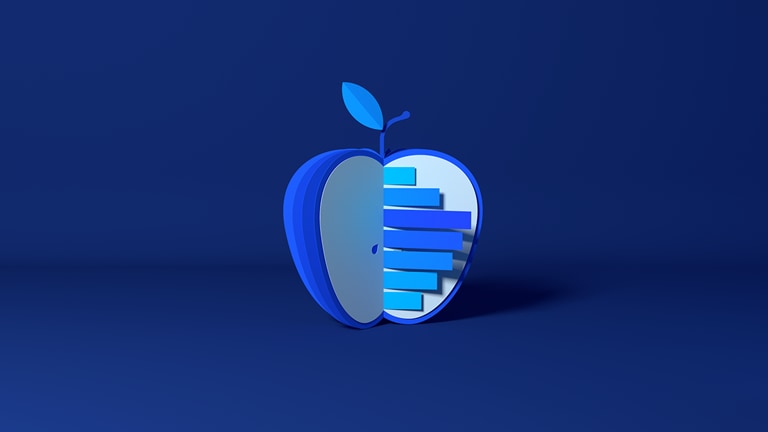
McKinsey Chart of the Day
See our daily chart that helps explain a changing world—as we strive for sustainable, inclusive growth.
Dive in
McKinsey Classics
Disruptive times call for transformational leaders with a knack for addressing complex problems. Read our 2018 classic “Leading with inner agility” to learn more.
Rewind
Only McKinsey
Delivering actionable insights on the day’s news, as only McKinsey can.
Subscribe now— Edited by Eleni Kostopoulos, managing editor, New York
Share these insights
Did you enjoy this newsletter? Forward it to colleagues and friends so they can subscribe too. Was this issue forwarded to you? Sign up for it and sample our 40+ other free email subscriptions here.
This email contains information about McKinsey's research, insights, services, or events. By opening our emails or clicking on links, you agree to our use of cookies and web tracking technology. For more information on how we use and protect your information, please review our privacy policy.
You received this email because you are a registered member of our Monthly Highlights newsletter.
Copyright © 2024 | McKinsey & Company, 3 World Trade Center, 175 Greenwich Street, New York, NY 10007
by "McKinsey Highlights" <publishing@email.mckinsey.com> - 11:51 - 2 Mar 2024 -
EP101: Top 3 Things You Should Know About Webhooks
EP101: Top 3 Things You Should Know About Webhooks
This week’s system design refresher: Top 3 Things You Should Know About Webhooks (Youtube video) Cloud Load Balancer Cheat Sheet How do we manage sensitive data in a system? What does ACID mean? SPONSOR US Learn Streaming Data Fundamentals at Your Pace (Sponsored)͏ ͏ ͏ ͏ ͏ ͏ ͏ ͏ ͏ ͏ ͏ ͏ ͏ ͏ ͏ ͏ ͏ ͏ ͏ ͏ ͏ ͏ ͏ ͏ ͏ ͏ ͏ ͏ ͏ ͏ ͏ ͏ ͏ ͏ ͏ ͏ ͏ ͏ ͏ ͏ ͏ ͏ ͏ ͏ ͏ ͏ ͏ ͏ ͏ ͏ ͏ ͏ ͏ ͏ ͏ ͏ ͏ ͏ ͏ ͏ ͏ ͏ ͏ ͏ ͏ ͏ ͏ ͏ ͏ ͏ ͏ ͏ ͏ ͏ ͏ ͏ ͏ ͏ ͏ ͏ ͏ ͏ ͏ ͏ ͏ ͏ ͏ ͏ ͏ ͏ ͏ ͏ ͏ ͏ ͏ ͏ ͏ ͏ ͏ ͏ ͏ ͏ ͏ ͏ ͏ ͏ ͏ ͏ ͏ ͏ ͏ ͏ ͏ ͏ ͏ ͏ ͏ ͏ ͏ ͏ ͏ ͏ ͏ ͏ ͏ ͏ ͏ ͏ ͏ ͏ ͏ ͏ ͏ ͏ ͏ ͏ ͏ ͏ ͏ ͏ ͏ ͏ ͏ ͏ ͏ ͏ ͏ ͏ ͏ ͏ ͏ ͏ ͏ ͏ ͏ ͏ ͏ ͏ ͏ ͏ ͏ ͏ ͏ ͏ ͏ ͏ ͏ ͏ ͏ ͏ ͏ ͏ ͏ ͏ ͏ ͏ ͏ ͏ ͏ ͏ ͏ ͏ ͏ ͏ ͏ ͏ ͏ ͏ ͏ ͏ ͏ ͏ ͏ ͏ ͏ ͏ ͏ ͏ ͏ ͏ Forwarded this email? Subscribe here for moreThis week’s system design refresher:
Top 3 Things You Should Know About Webhooks (Youtube video)
Cloud Load Balancer Cheat Sheet
How do we manage sensitive data in a system?
What does ACID mean?
SPONSOR US
Learn Streaming Data Fundamentals at Your Pace (Sponsored)
There’s a great new way to learn the basics of streaming data — enroll in Redpanda University for free, online, self-paced training. Courses include as many as 8 lessons and end with a brief quiz.
Start with the Streaming Data Fundamentals course to get a solid foundation of streaming data knowledge. More advanced courses such as cluster management are available, too!
Top 3 Things You Should Know About Webhooks!
Cloud Load Balancer Cheat Sheet
Efficient load balancing is vital for optimizing the performance and availability of your applications in the cloud.
However, managing load balancers can be overwhelming, given the various types and configuration options available.
In today's multi-cloud landscape, mastering load balancing is essential to ensure seamless user experiences and maximize resource utilization, especially when orchestrating applications across multiple cloud providers. Having the right knowledge is key to overcoming these challenges and achieving consistent, reliable application delivery.
In selecting the appropriate load balancer type, it's essential to consider factors such as application traffic patterns, scalability requirements, and security considerations. By carefully evaluating your specific use case, you can make informed decisions that enhance your cloud infrastructure's efficiency and reliability.
This Cloud Load Balancer cheat sheet would help you in simplifying the decision-making process and helping you implement the most effective load balancing strategy for your cloud-based applications.
Over to you: What factors do you believe are most crucial in choosing the right load balancer type for your applications?Latest articles
If you’re not a paid subscriber, here’s what you missed this month.
To receive all the full articles and support ByteByteGo, consider subscribing:
How do we manage sensitive data in a system?
The cheat sheet below shows a list of guidelines.
What is Sensitive Data?
Personal Identifiable Information (PII), health information, intellectual property, financial information, education and legal records are all sensitive data.
Most countries have laws and regulations that require the protection of sensitive data. For example, the General Data Protection Regulation (GDPR) in the European Union sets stringent rules for data protection and privacy. Non-compliance with such regulations can result in hefty fines, legal actions, and sanctions against the violating entity.
When we design systems, we need to design for data protection.Encryption & Key Management
The data transmission needs to be encrypted using SSL. Passwords shouldn’t be stored in plain text.
For key storage, we design different roles including password applicant, password manager and auditor, all holding one piece of the key. We will need all three keys to open a lock.Data Desensitization
Data desensitization, also known as data anonymization or data sanitization, refers to the process of removing or modifying personal information from a dataset so that individuals cannot be readily identified. This practice is crucial in protecting individuals' privacy and ensuring compliance with data protection laws and regulations. Data desensitization is often used when sharing data externally, such as for research or statistical analysis, or even internally within an organization, to limit access to sensitive information.
Algorithms like GCM store cipher data and keys separately so that hackers are not able to decipher the user data.Minimal Data Permissions
To protect sensitive data, we should grant minimal permissions to the users. Often we design Role-Based Access Control (RBAC) to restrict access to authorized users based on their roles within an organization. It is a widely used access control mechanism that simplifies the management of user permissions, ensuring that users have access to only the information and resources necessary for their roles.Data Lifecycle Management
When we develop data products like reports or data feeds, we need to design a process to maintain data quality. Data developers should be granted with necessary permissions during development. After the data is online, they should be revoked from the data access.
What does ACID mean?
The diagram below explains what ACID means in the context of a database transaction.
Atomicity
The writes in a transaction are executed all at once and cannot be broken into smaller parts. If there are faults when executing the transaction, the writes in the transaction are rolled back.
So atomicity means “all or nothing”.Consistency
Unlike “consistency” in CAP theorem, which means every read receives the most recent write or an error, here consistency means preserving database invariants. Any data written by a transaction must be valid according to all defined rules and maintain the database in a good state.Isolation
When there are concurrent writes from two different transactions, the two transactions are isolated from each other. The most strict isolation is “serializability”, where each transaction acts like it is the only transaction running in the database. However, this is hard to implement in reality, so we often adopt loser isolation level.Durability
Data is persisted after a transaction is committed even in a system failure. In a distributed system, this means the data is replicated to some other nodes.
SPONSOR US
Get your product in front of more than 500,000 tech professionals.
Our newsletter puts your products and services directly in front of an audience that matters - hundreds of thousands of engineering leaders and senior engineers - who have influence over significant tech decisions and big purchases.
Space Fills Up Fast - Reserve Today
Ad spots typically sell out about 4 weeks in advance. To ensure your ad reaches this influential audience, reserve your space now by emailing hi@bytebytego.com
Like
Comment
Restack
© 2024 ByteByteGo
548 Market Street PMB 72296, San Francisco, CA 94104
Unsubscribe
by "ByteByteGo" <bytebytego@substack.com> - 11:36 - 2 Mar 2024 -
SEO Packages and price list
Hi,
Hope you are doing well.
I can help your website to get on the 1st page of Google..
If you are interested then kindly share these details with us:-
1 Your website/URL
2 Your target area/location
3 Keywords
Let me know if you are interested, I will send you our SEO Packages and price list
Thanks & RegardsAshu
Whats app & call: - +91 8920389159
by "Ashu" <Ashu.kumar012@outlook.com> - 06:49 - 1 Mar 2024 -
The best workplace rituals can help people find meaning
On Point
Moving beyond “me” to “we” Brought to you by Liz Hilton Segel, chief client officer and managing partner, global industry practices, & Homayoun Hatami, managing partner, global client capabilities
•
A lost art? Workplace rituals can bring colleagues together, helping people move beyond “me” to “we,” McKinsey partner Bryan Hancock and senior partner emeritus Bill Schaninger share in an episode of the McKinsey Talks Talent podcast. The pandemic paused many such rituals, to the extent that the youngest cohort in the workforce might not be familiar with them. Rituals can be milestones to celebrate important events, such as making partner or clinching a deal, but they are not limited to major accomplishments. During a routine meeting, colleagues can share cool projects they have worked on that week, helping everyone (particularly younger colleagues) get a feel for the breadth of their work.
— Edited by Jana Zabkova, senior editor, New York
This email contains information about McKinsey's research, insights, services, or events. By opening our emails or clicking on links, you agree to our use of cookies and web tracking technology. For more information on how we use and protect your information, please review our privacy policy.
You received this newsletter because you subscribed to the Only McKinsey newsletter, formerly called On Point.
Copyright © 2024 | McKinsey & Company, 3 World Trade Center, 175 Greenwich Street, New York, NY 10007
by "Only McKinsey" <publishing@email.mckinsey.com> - 01:42 - 1 Mar 2024











